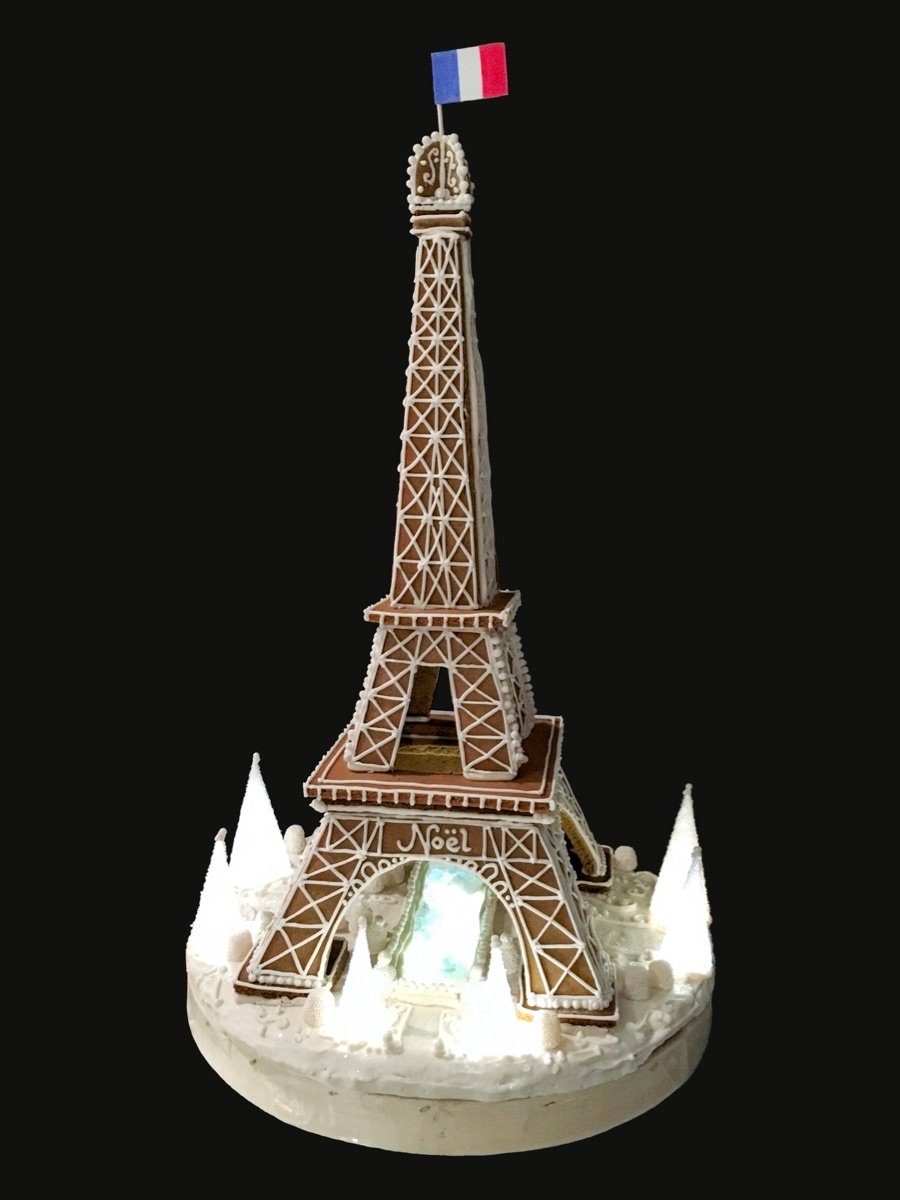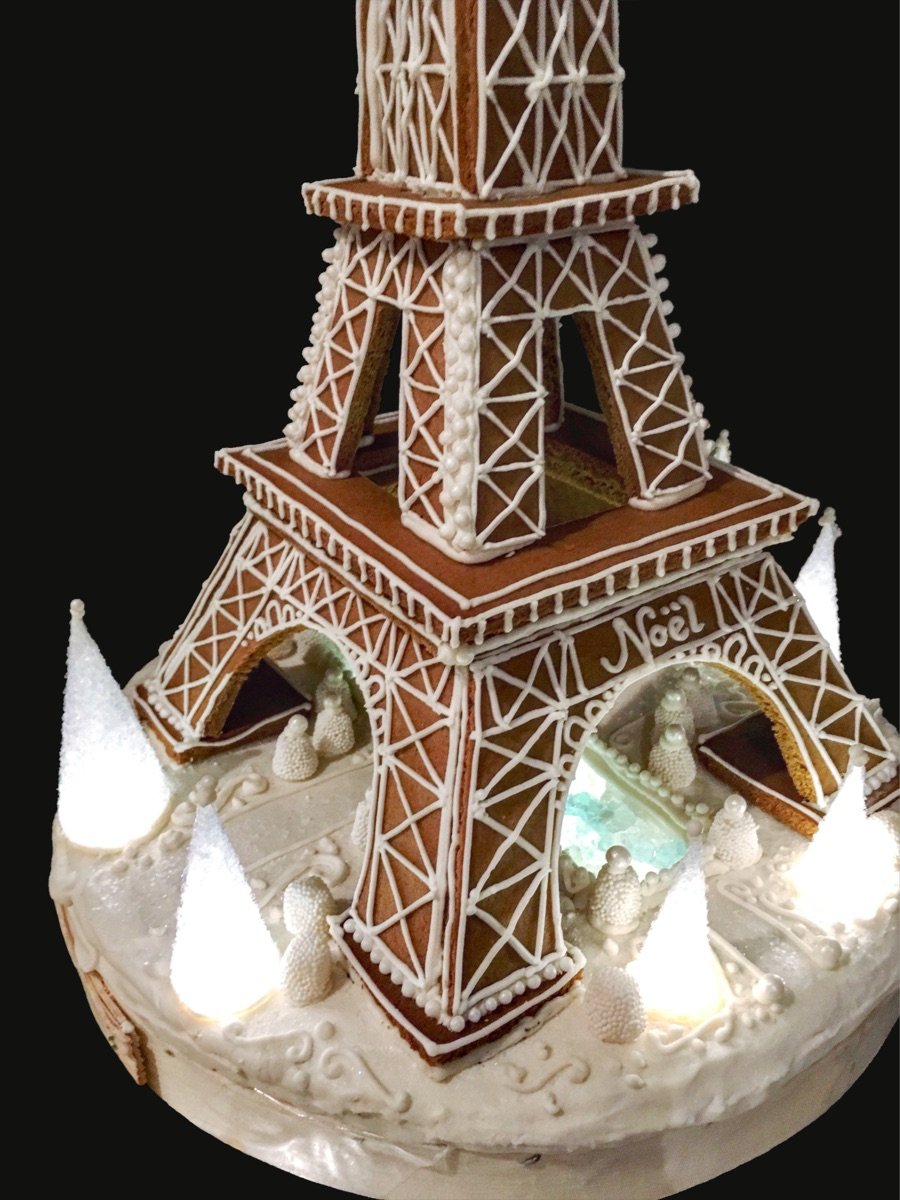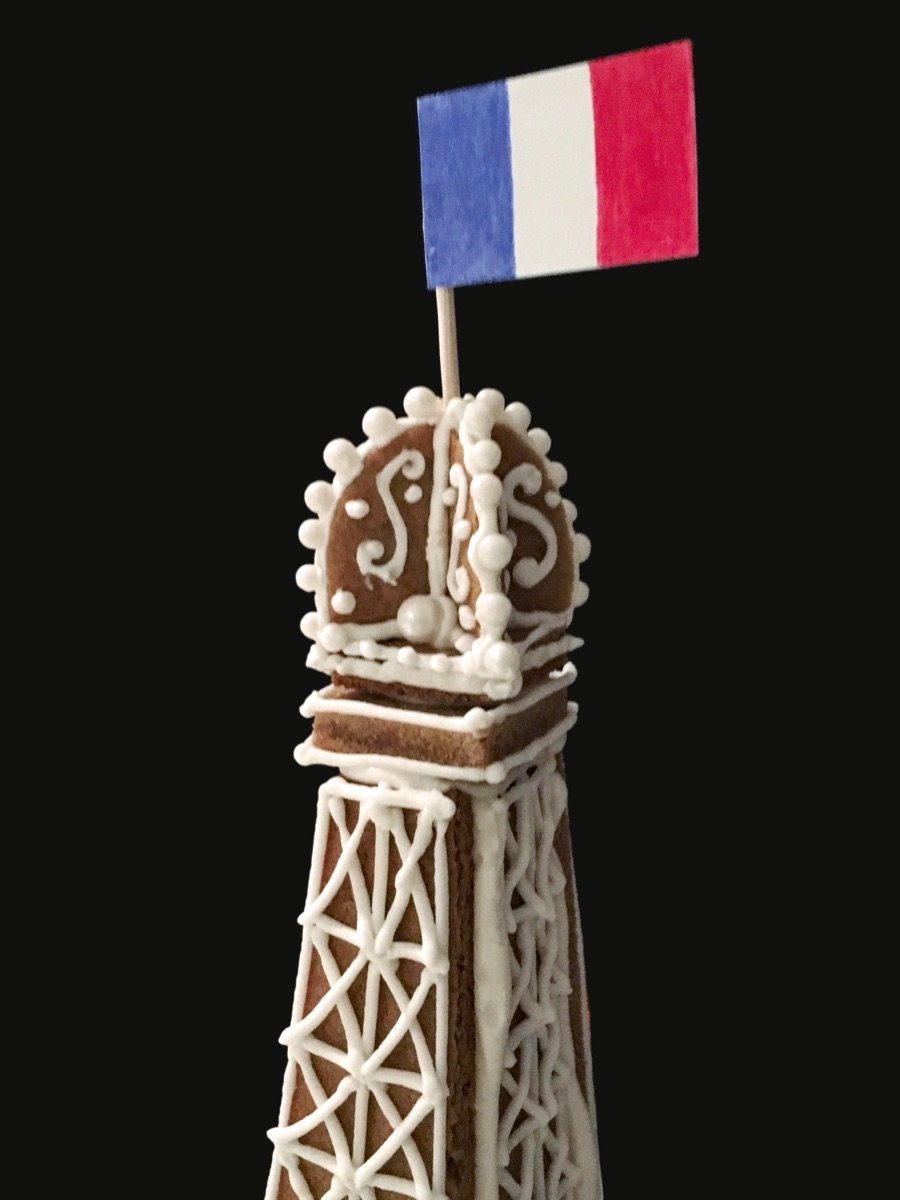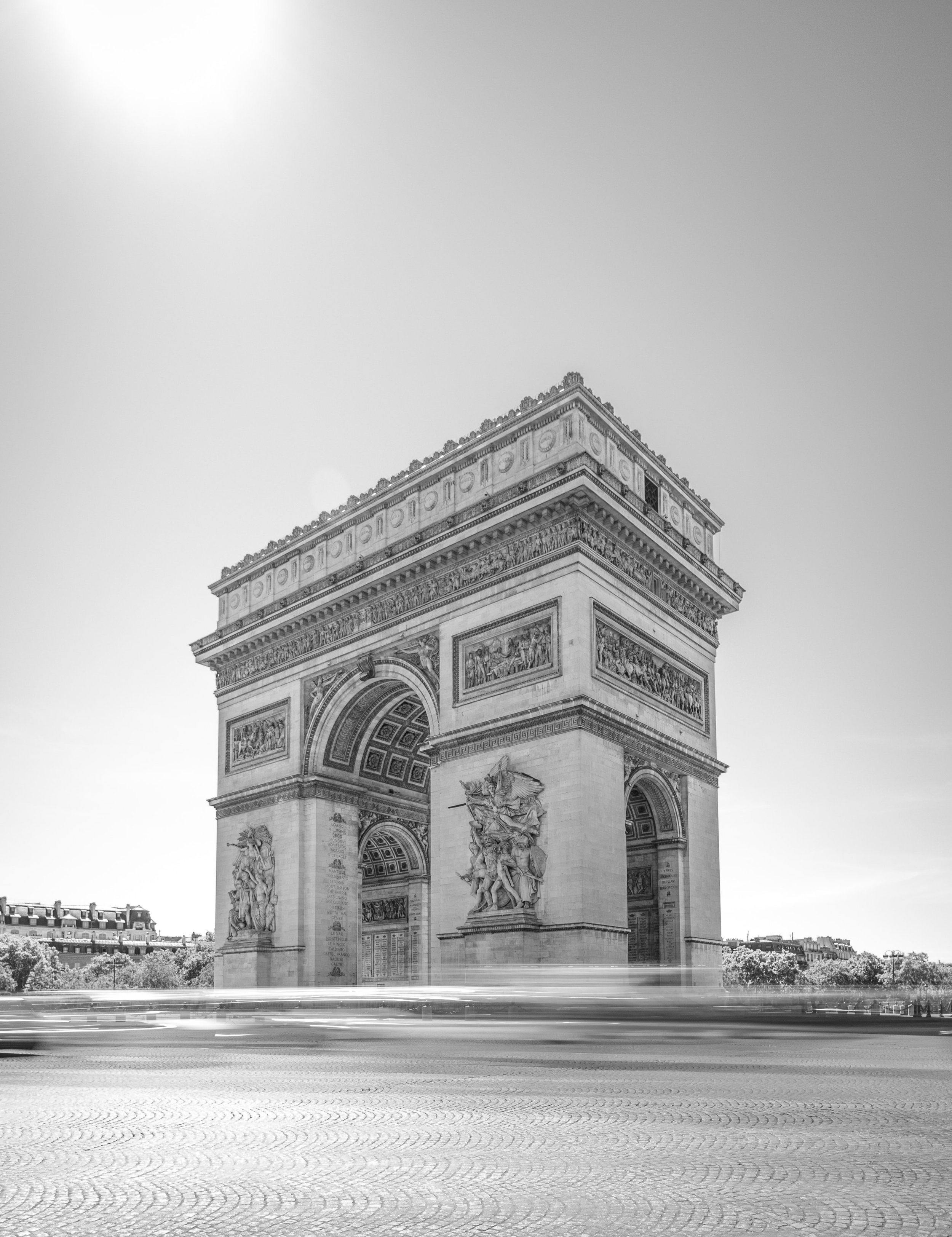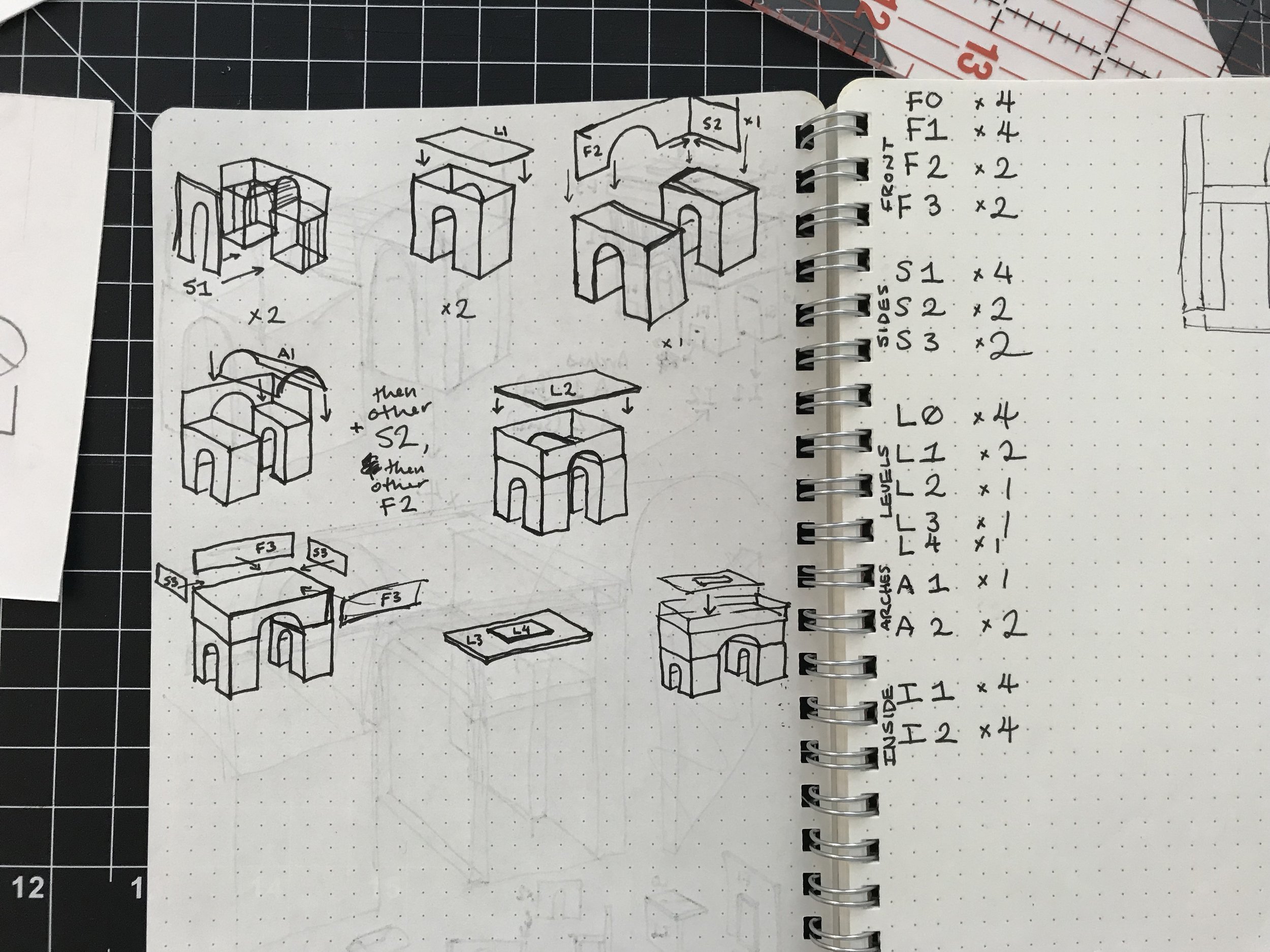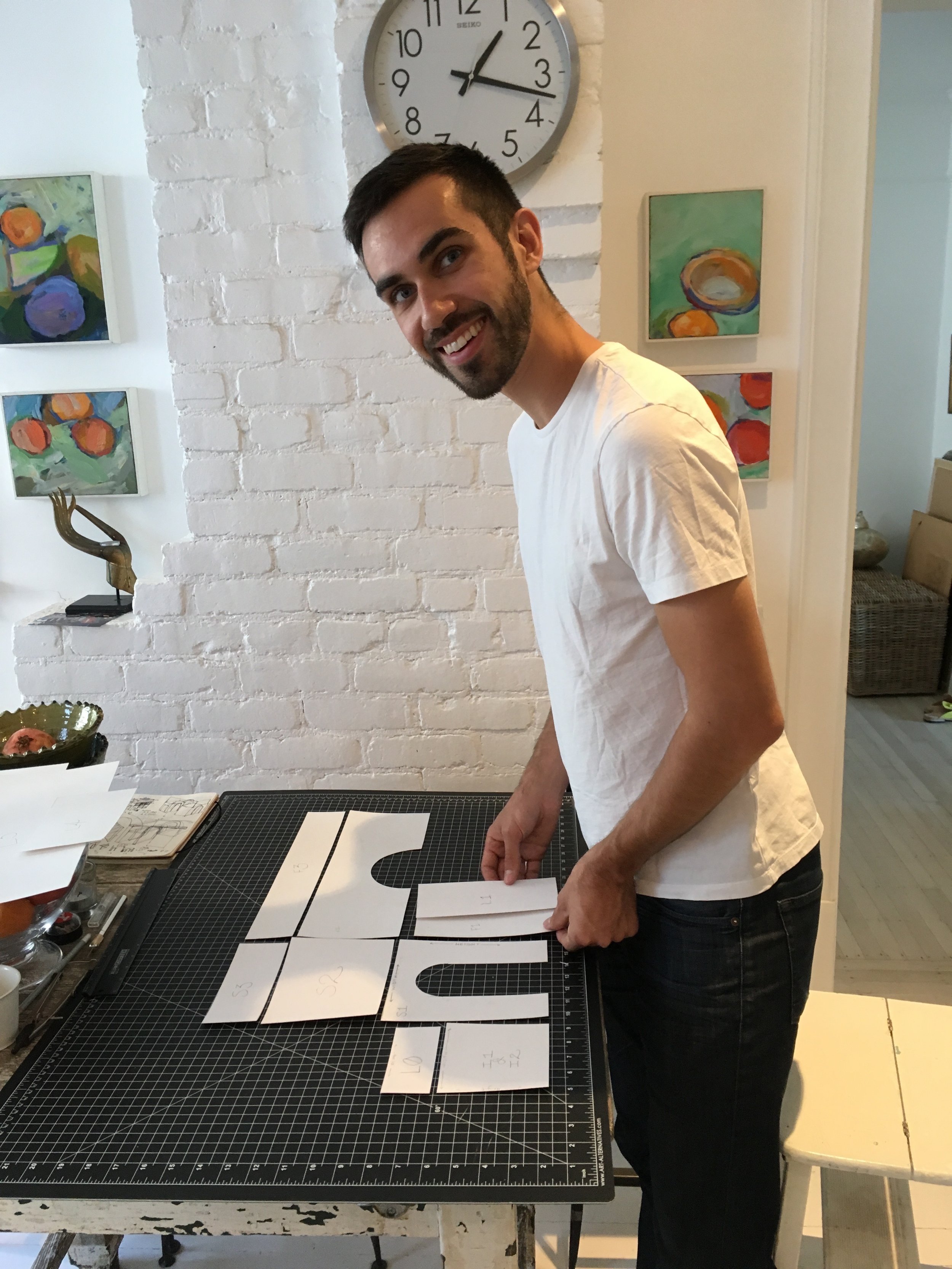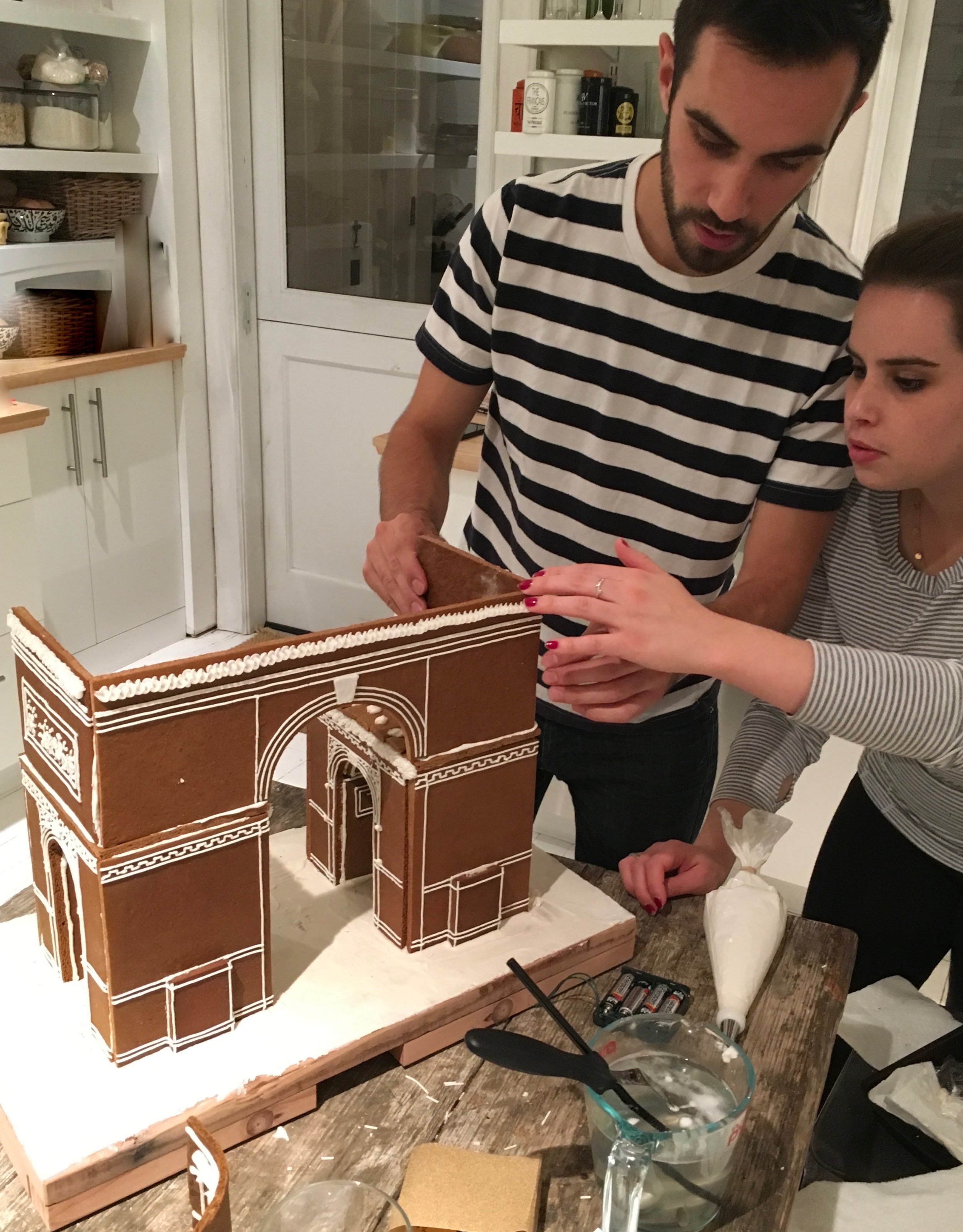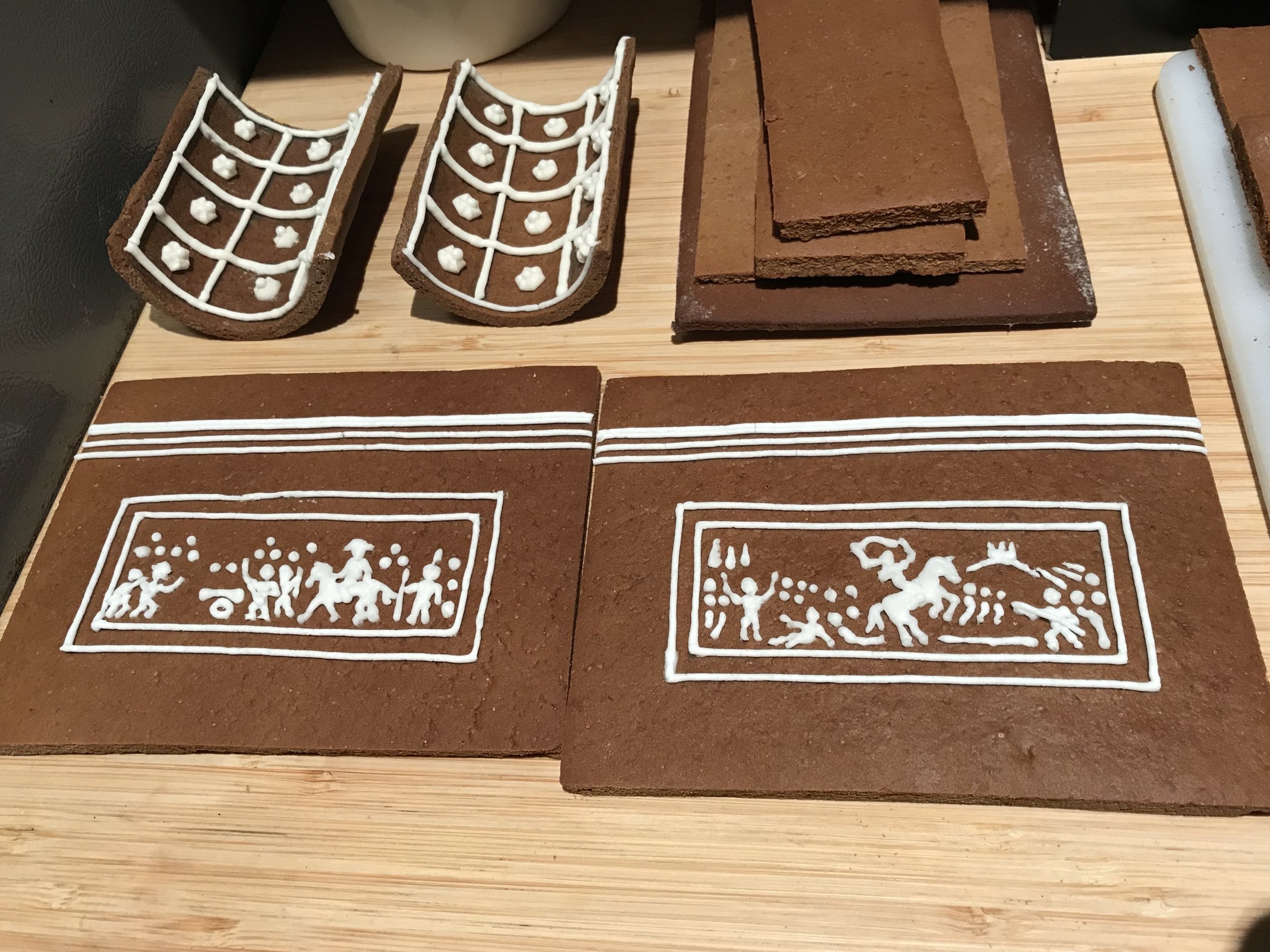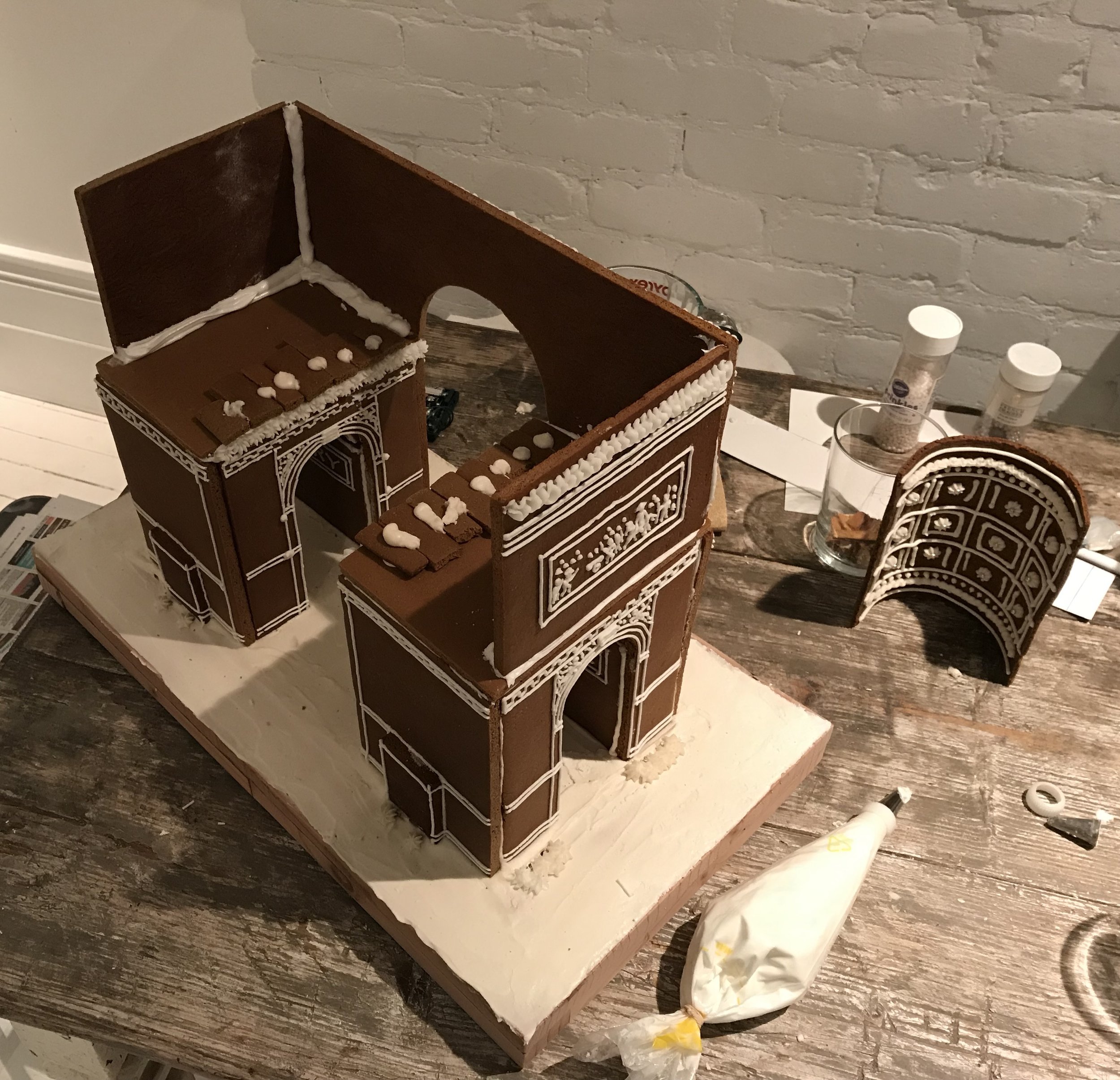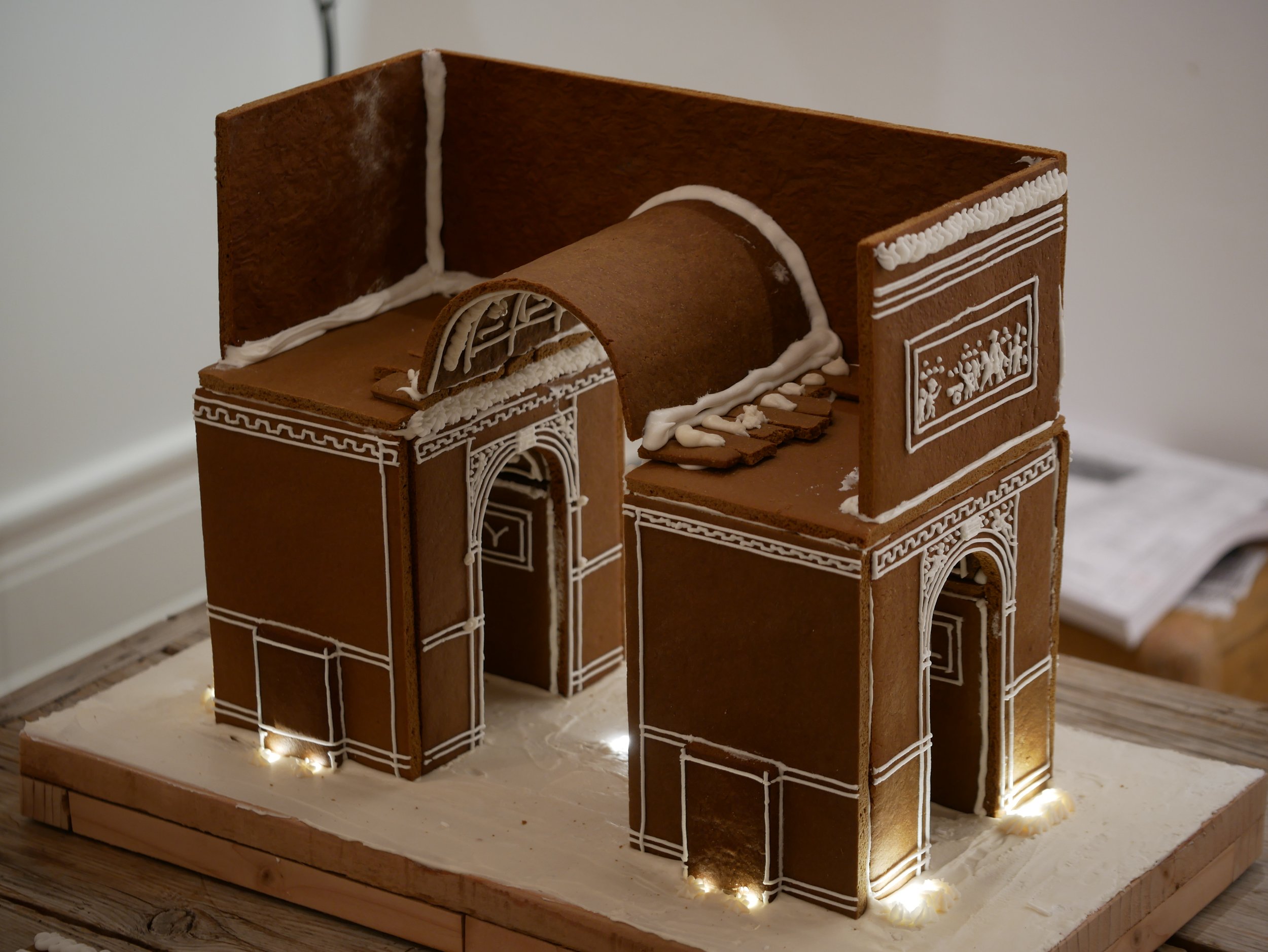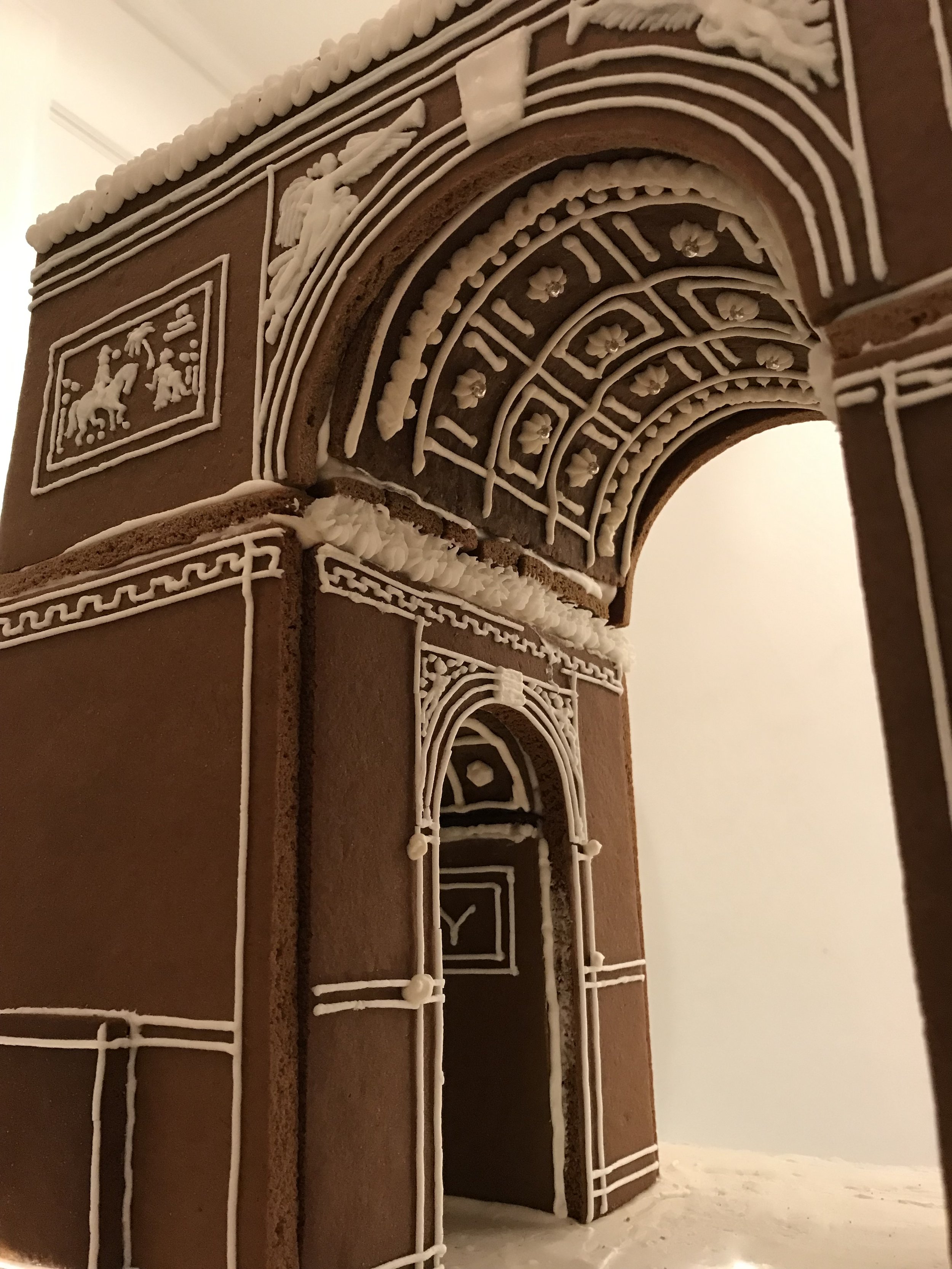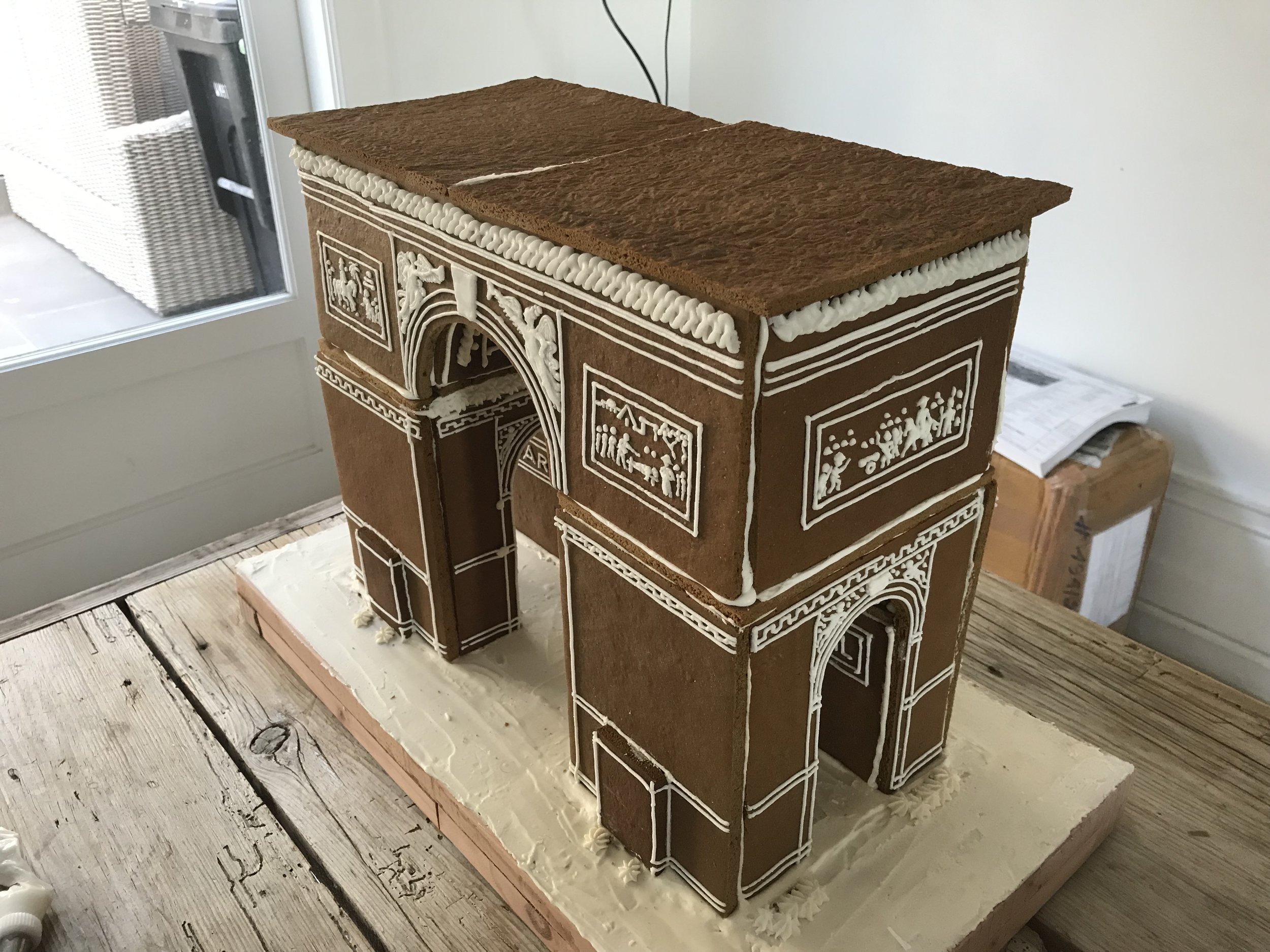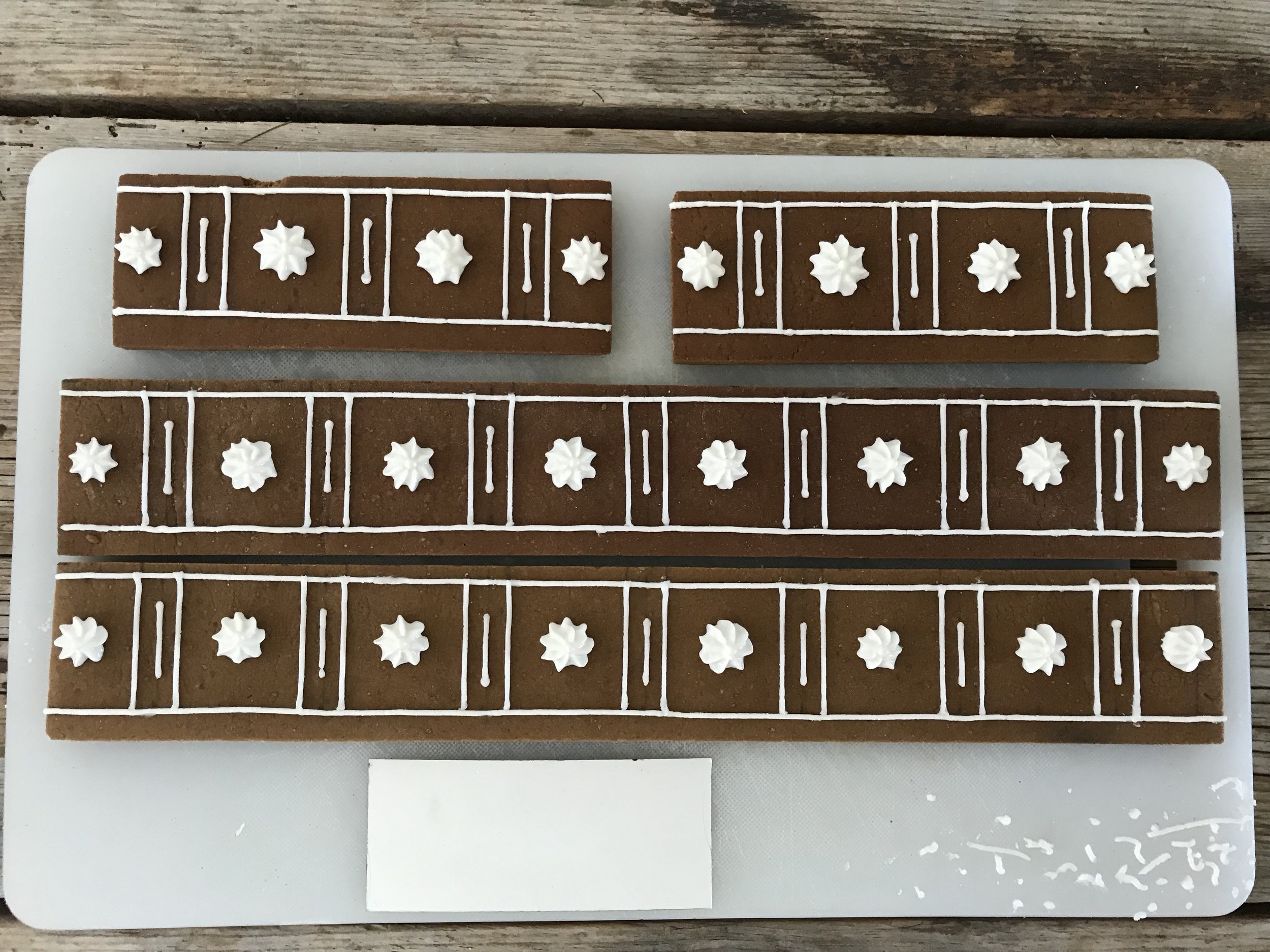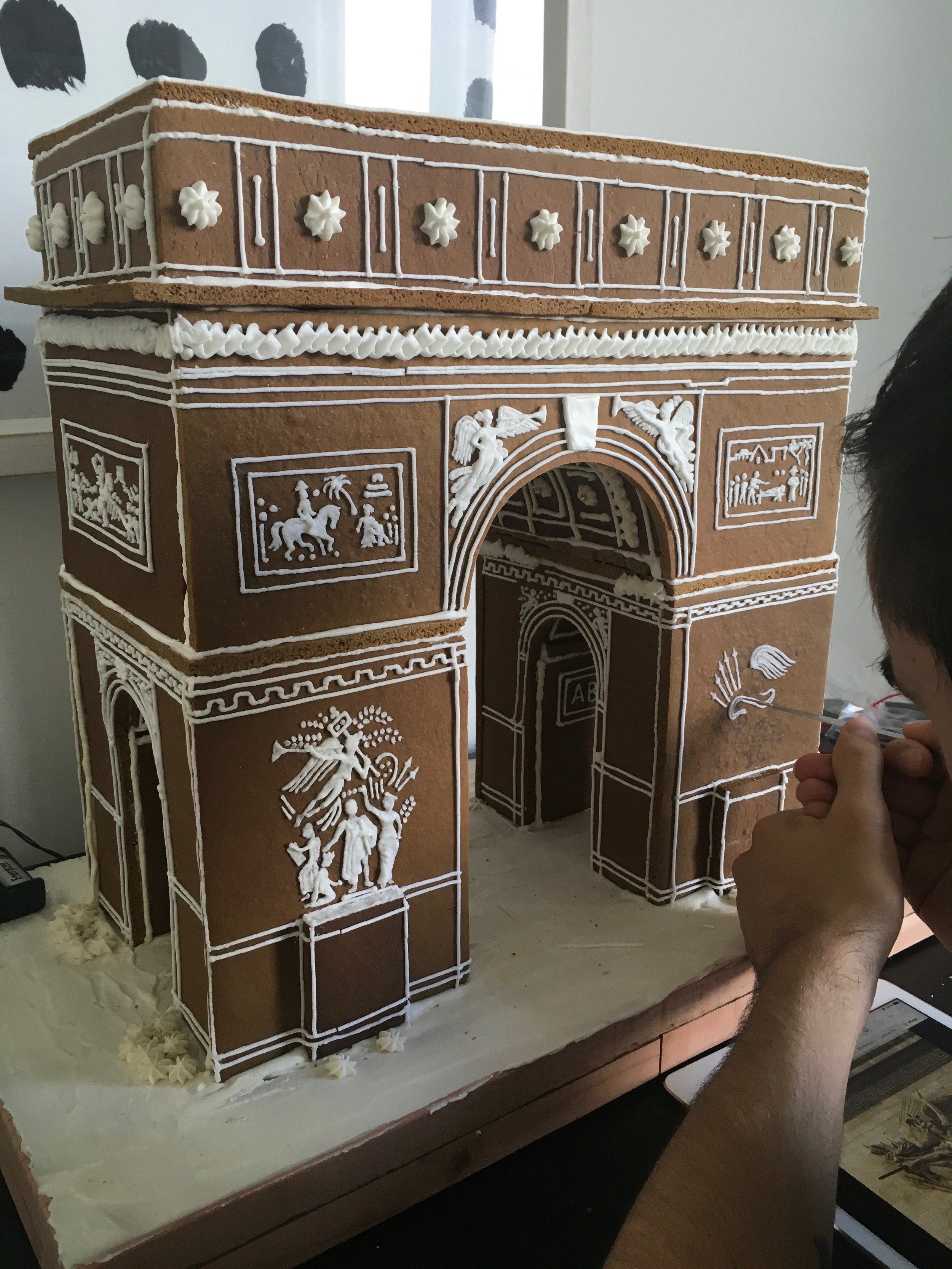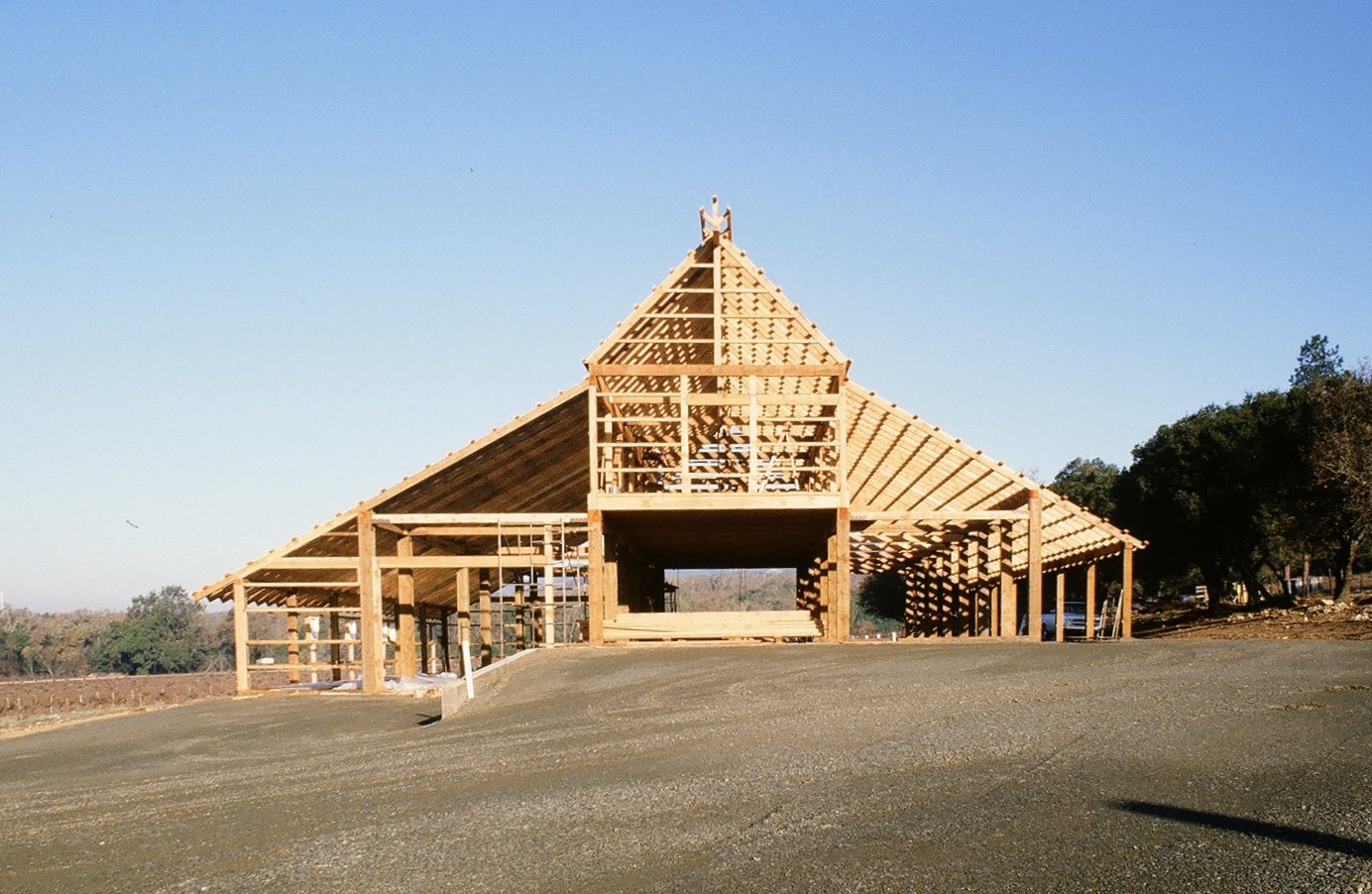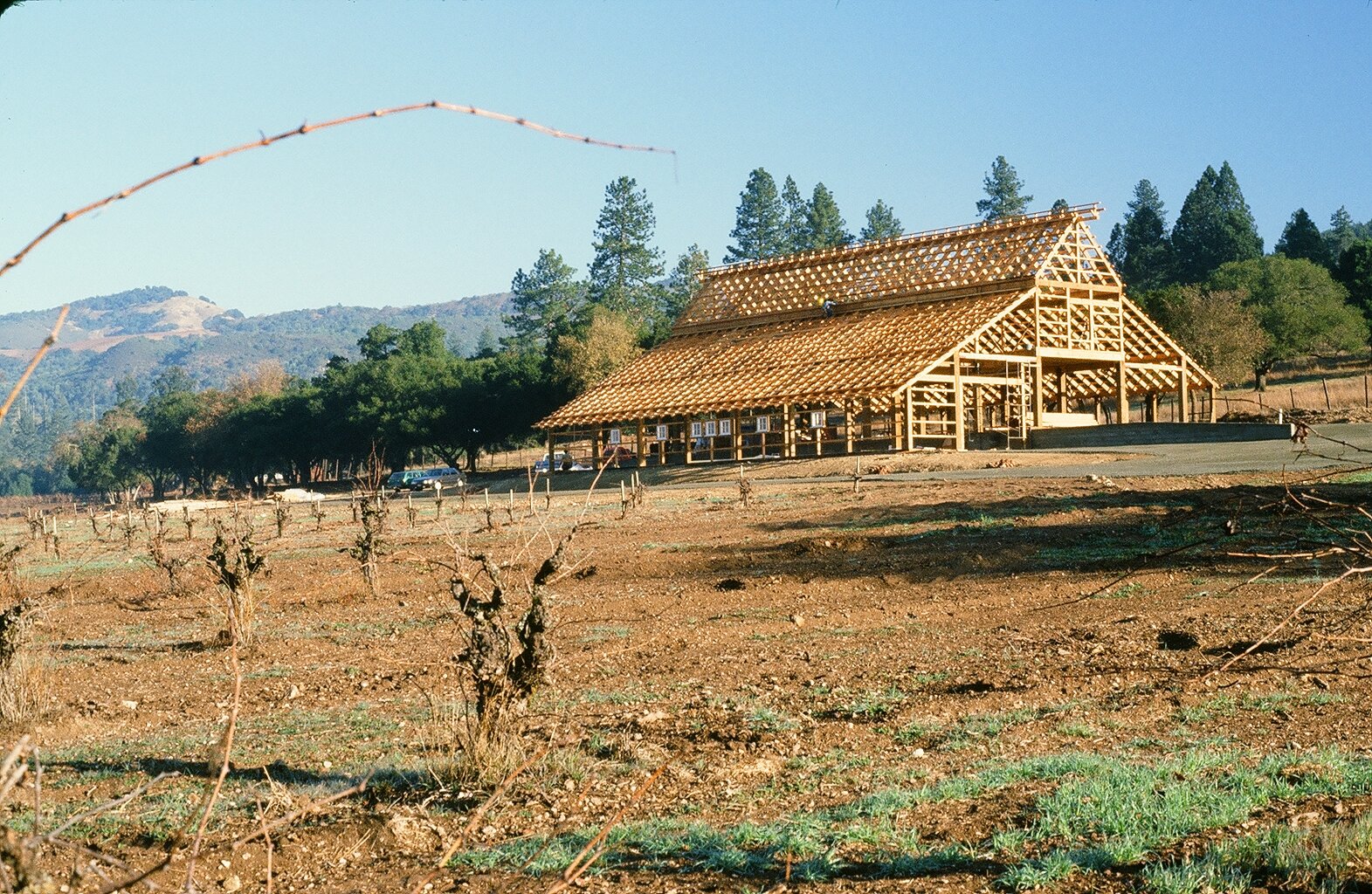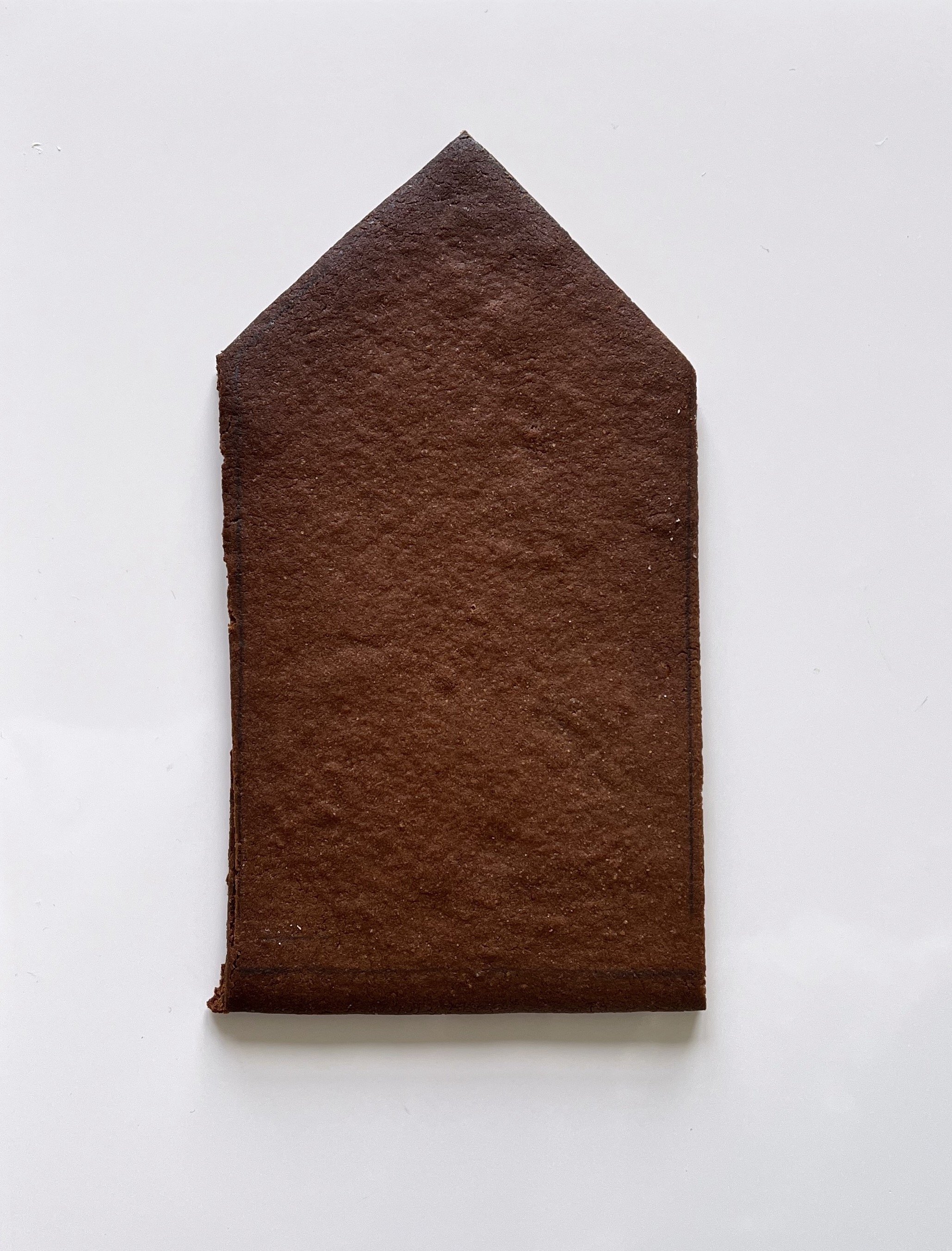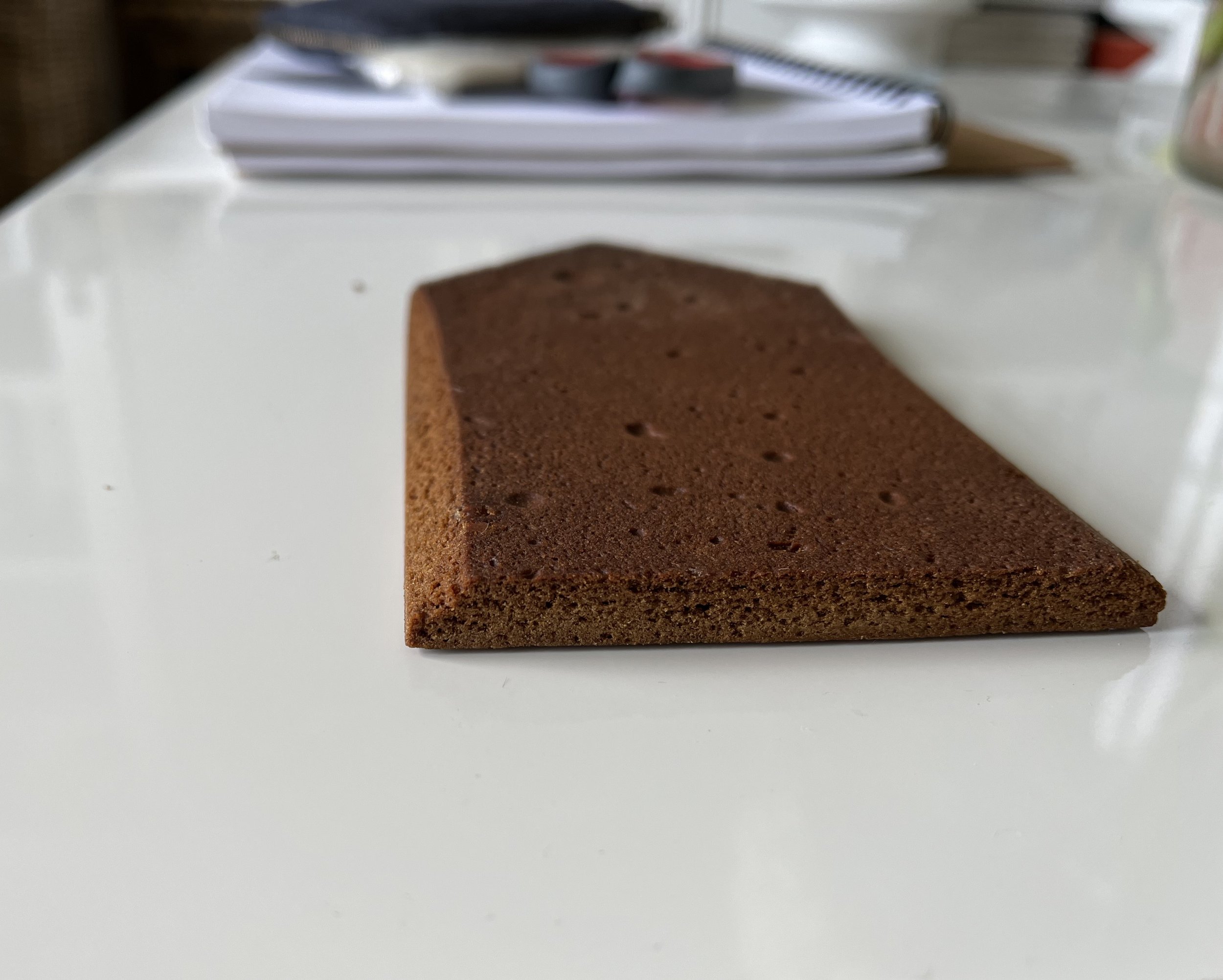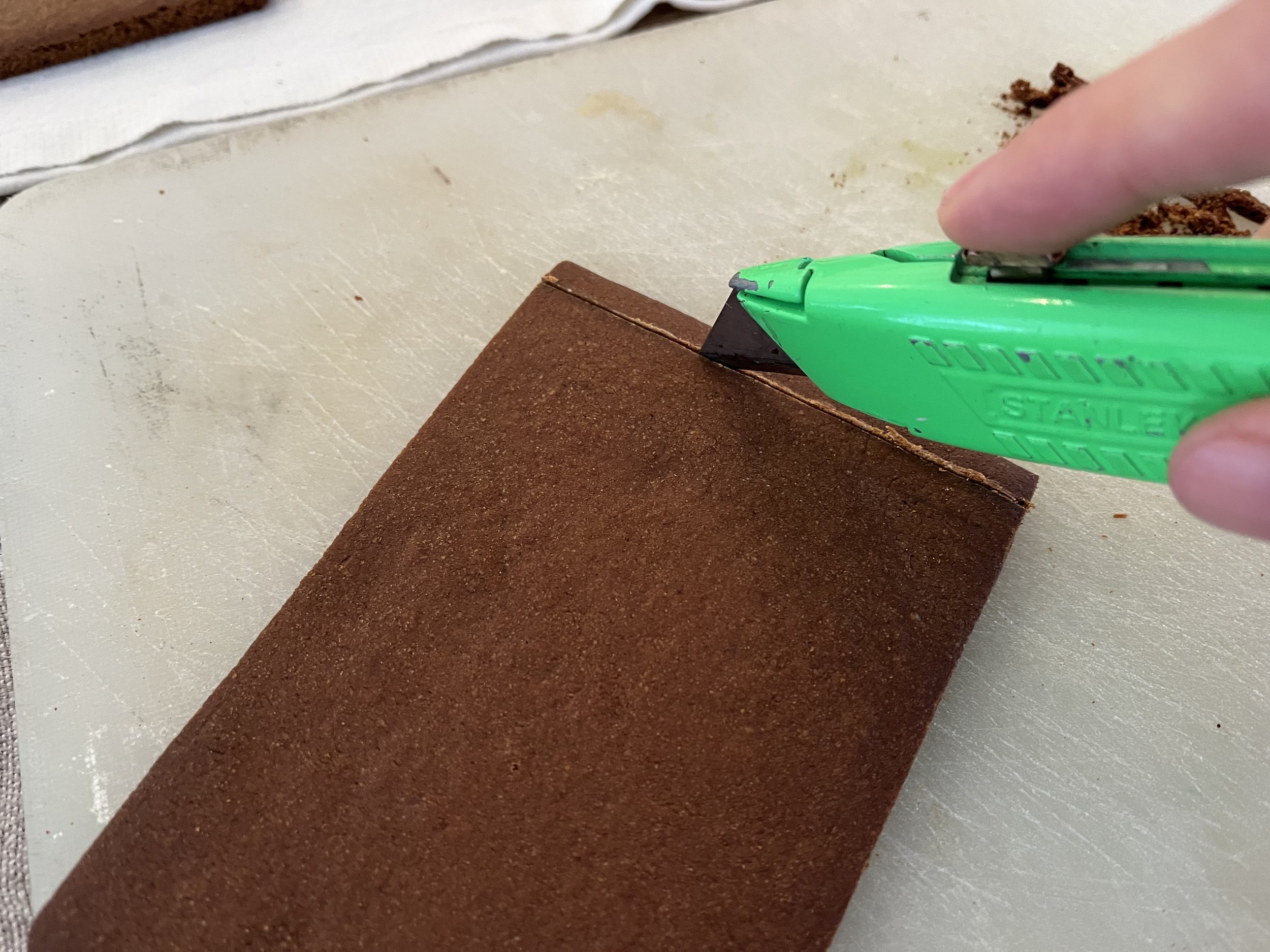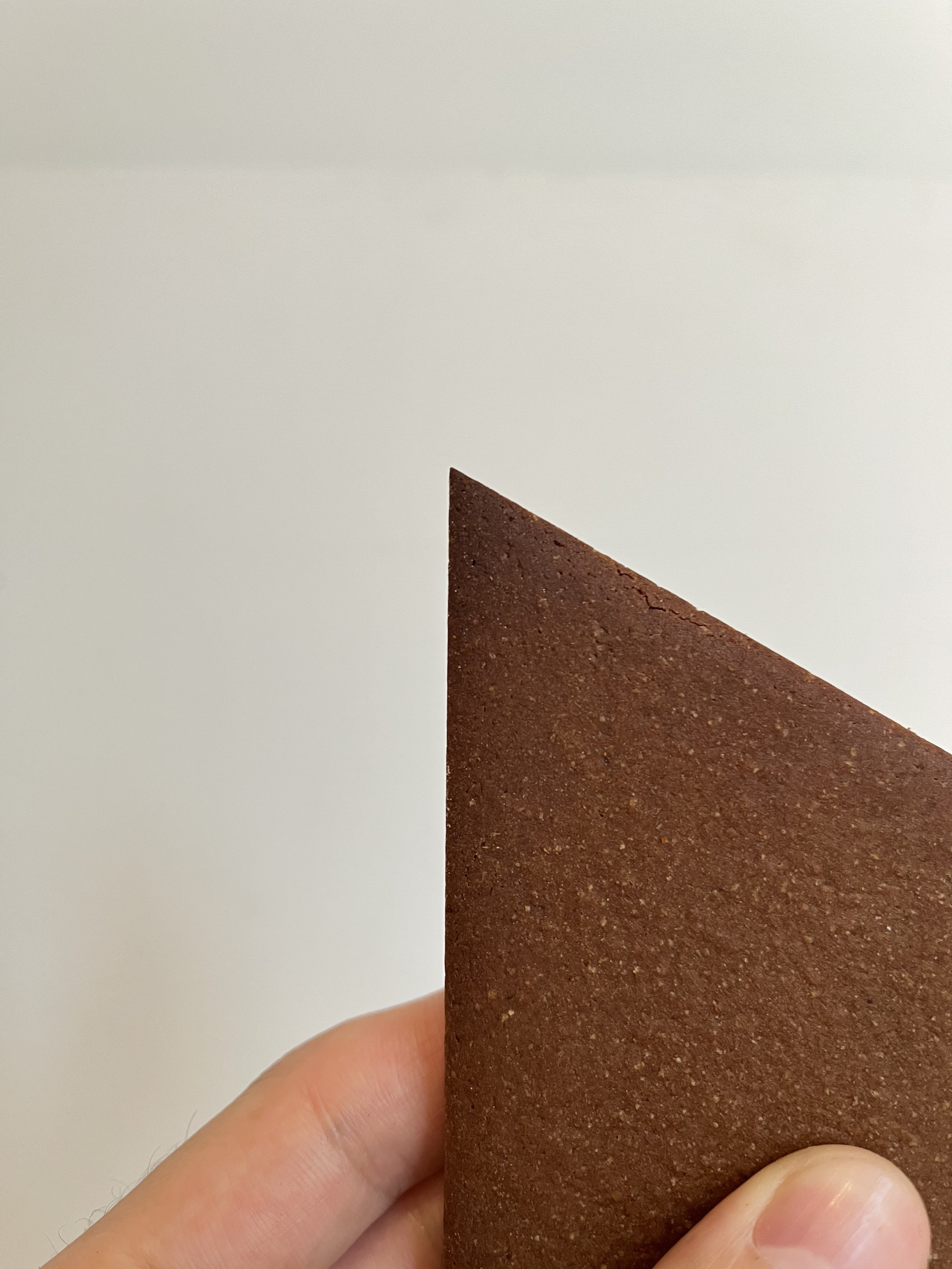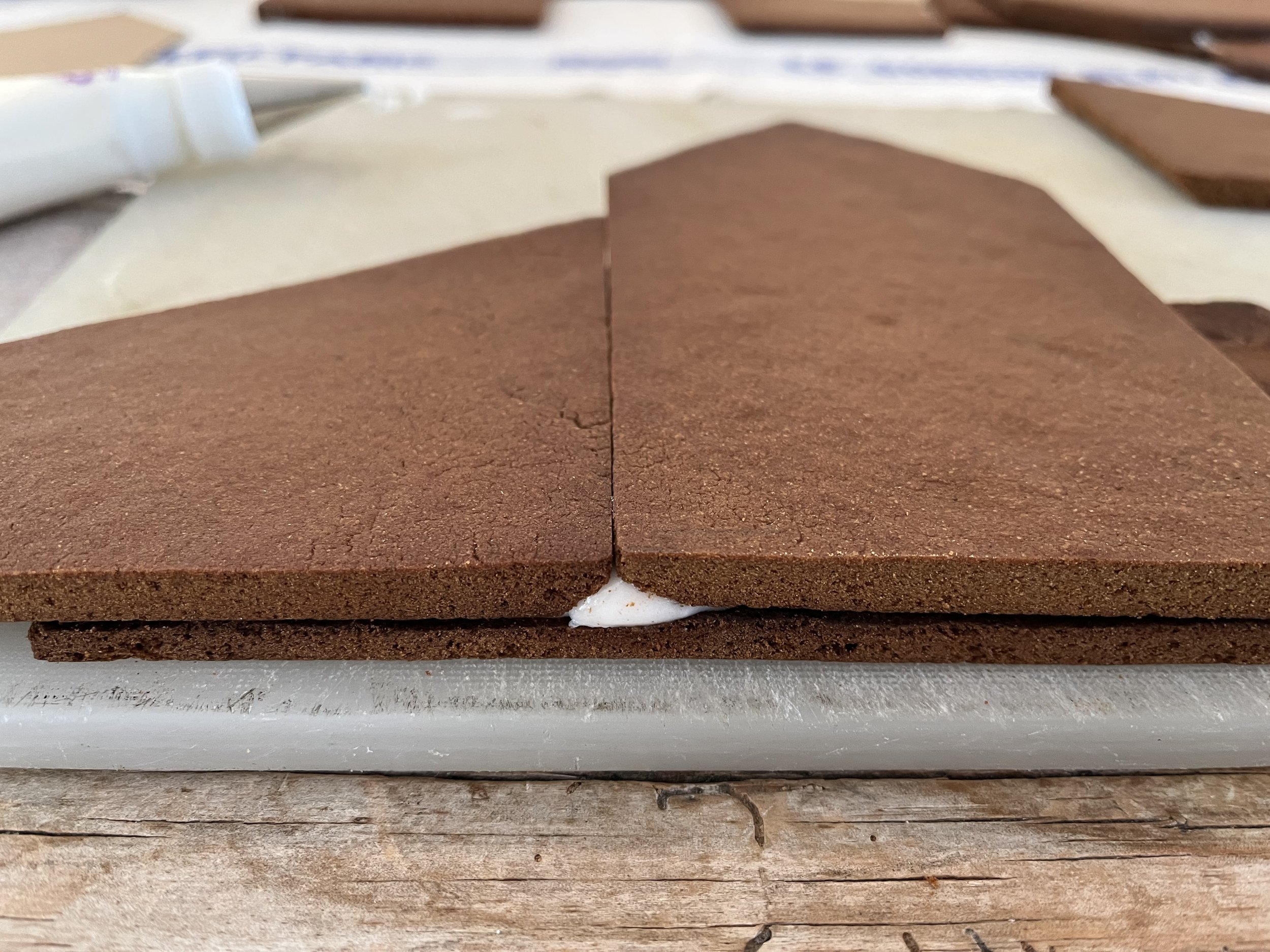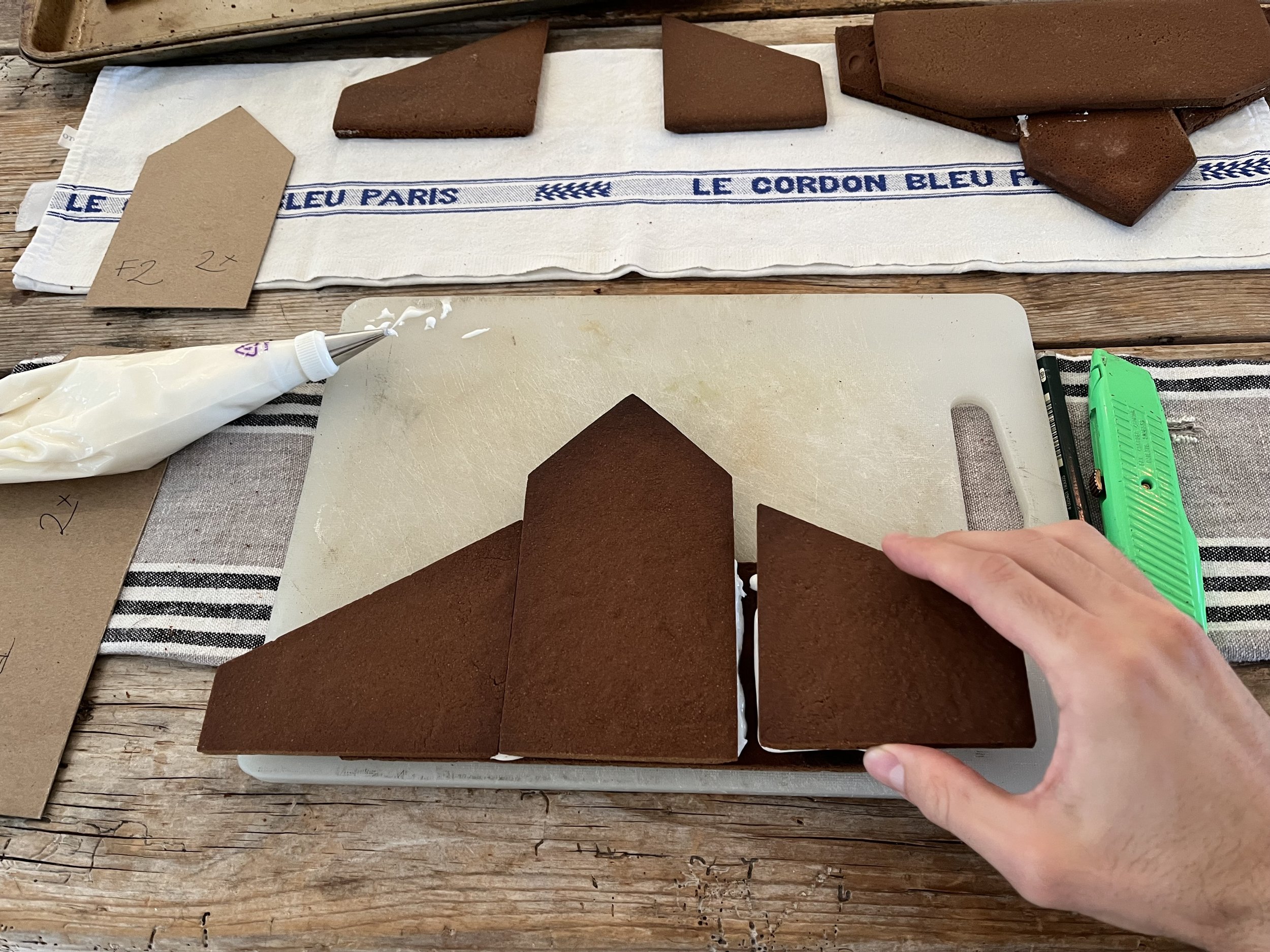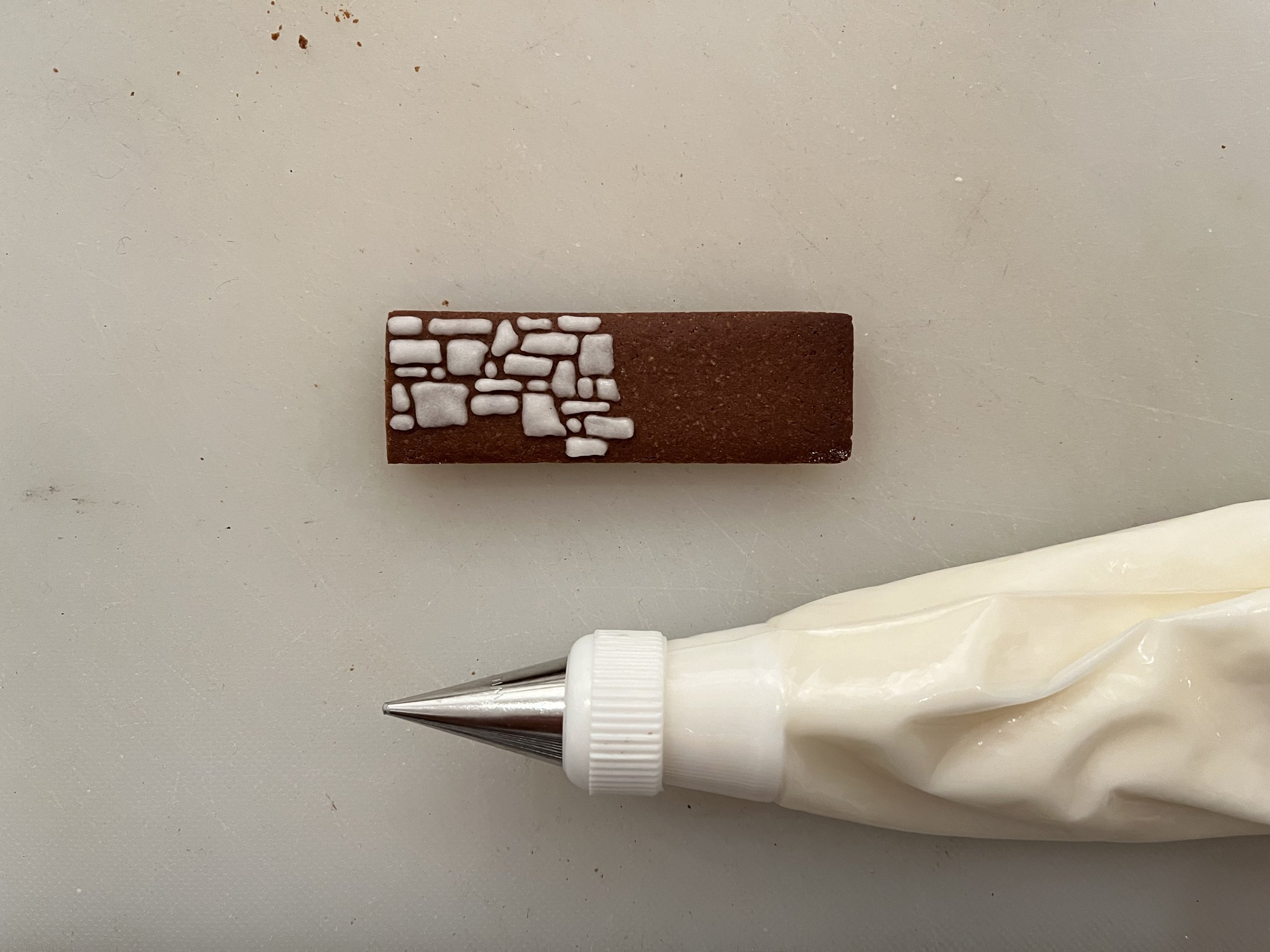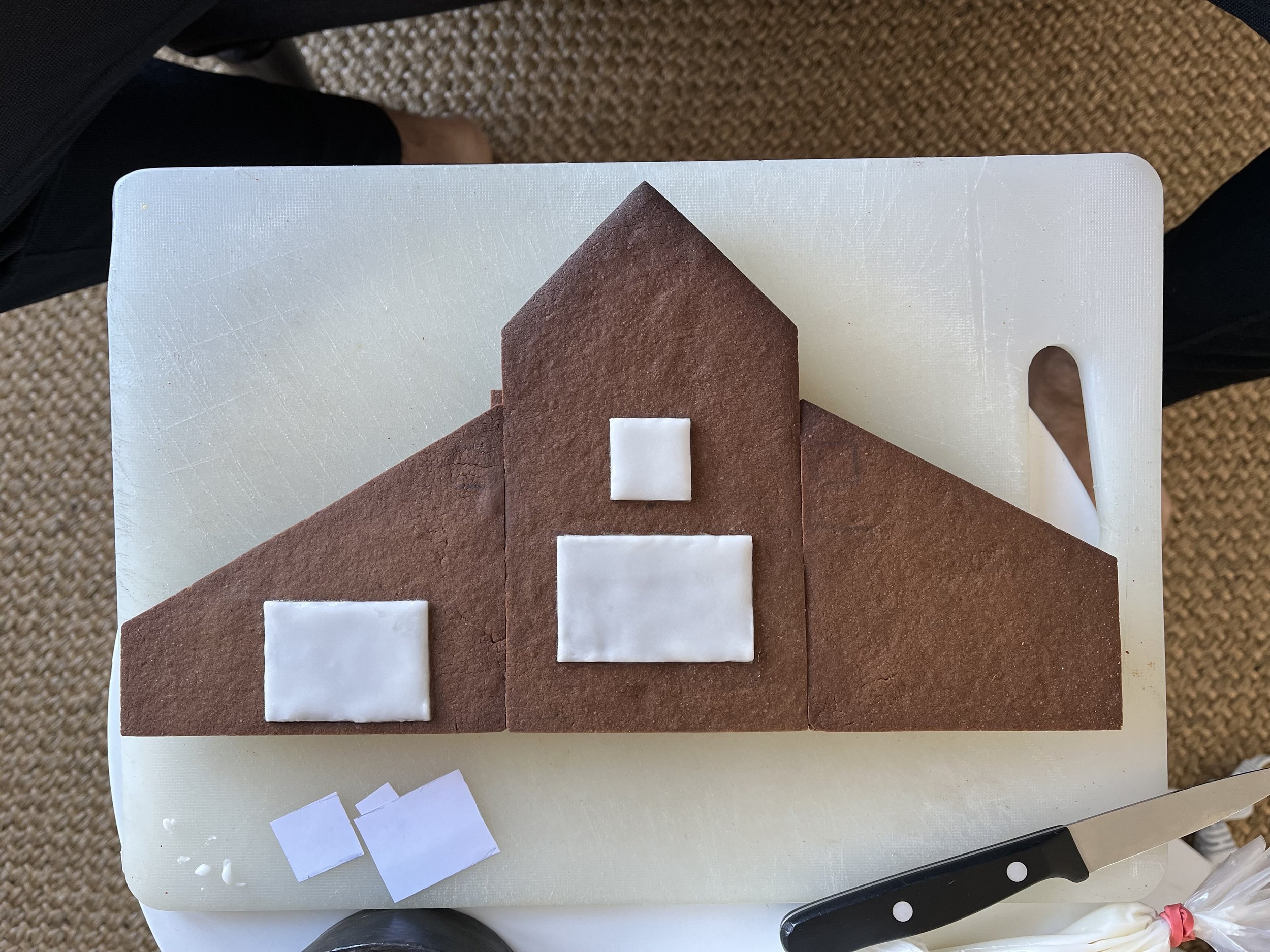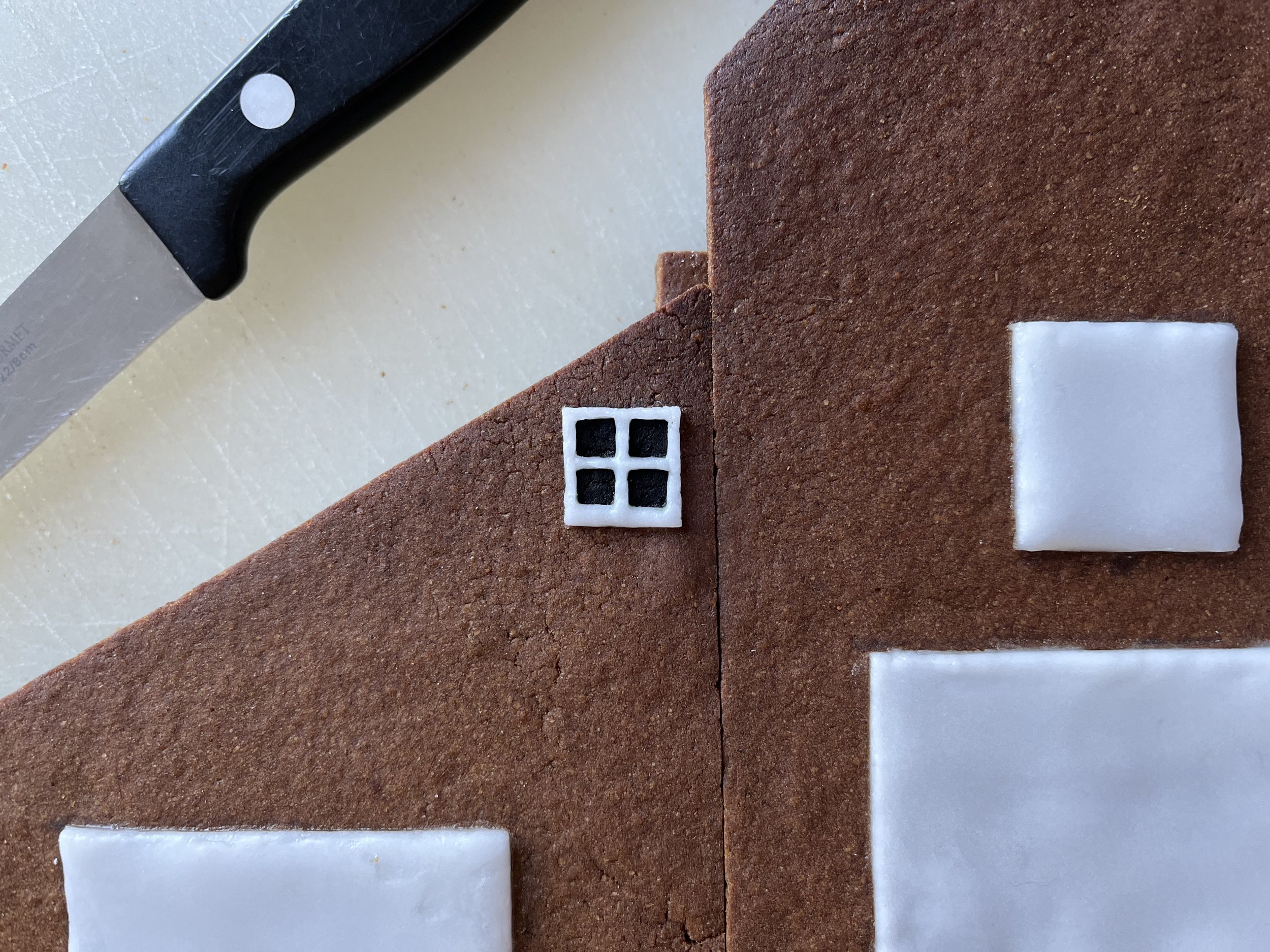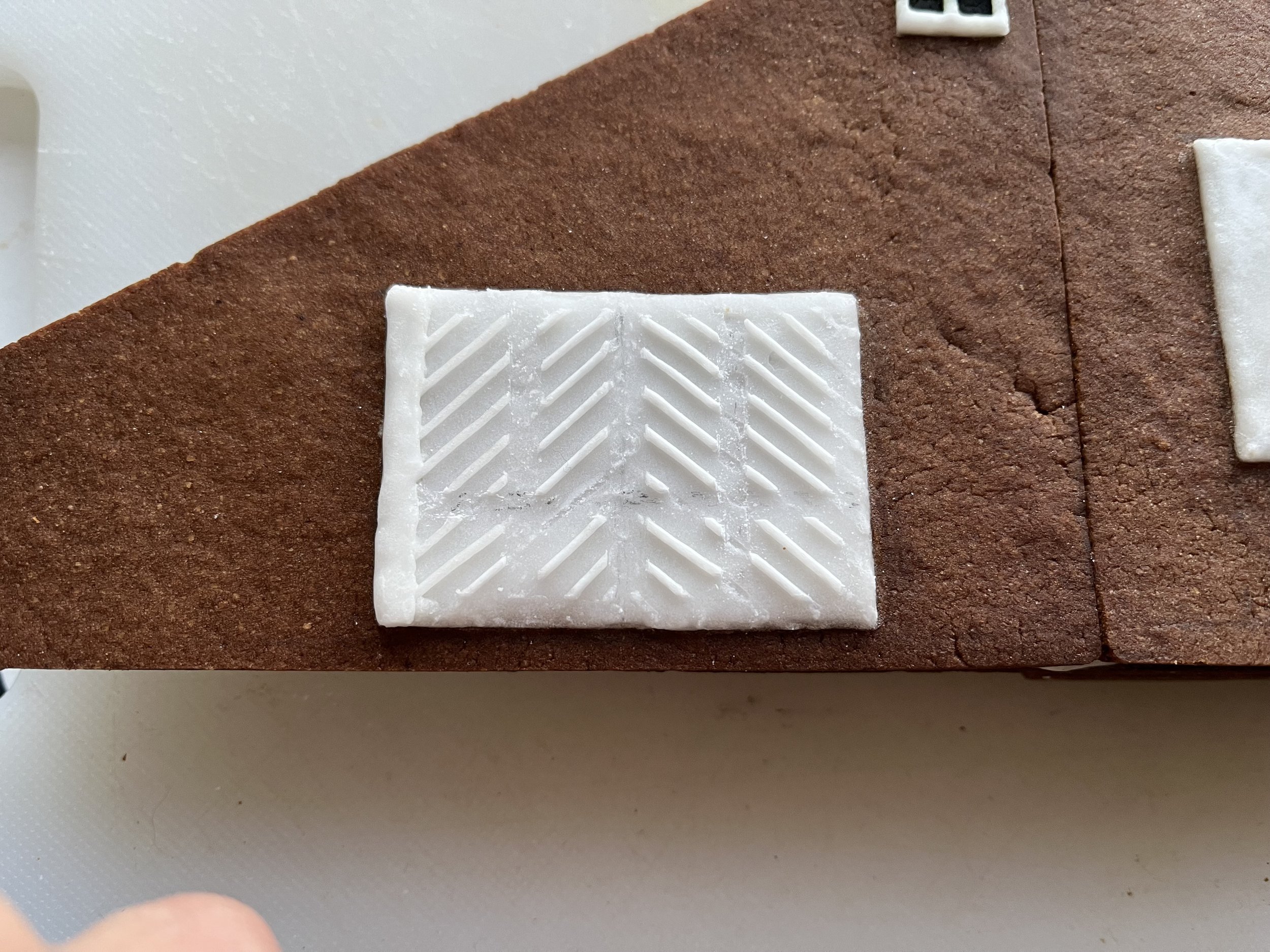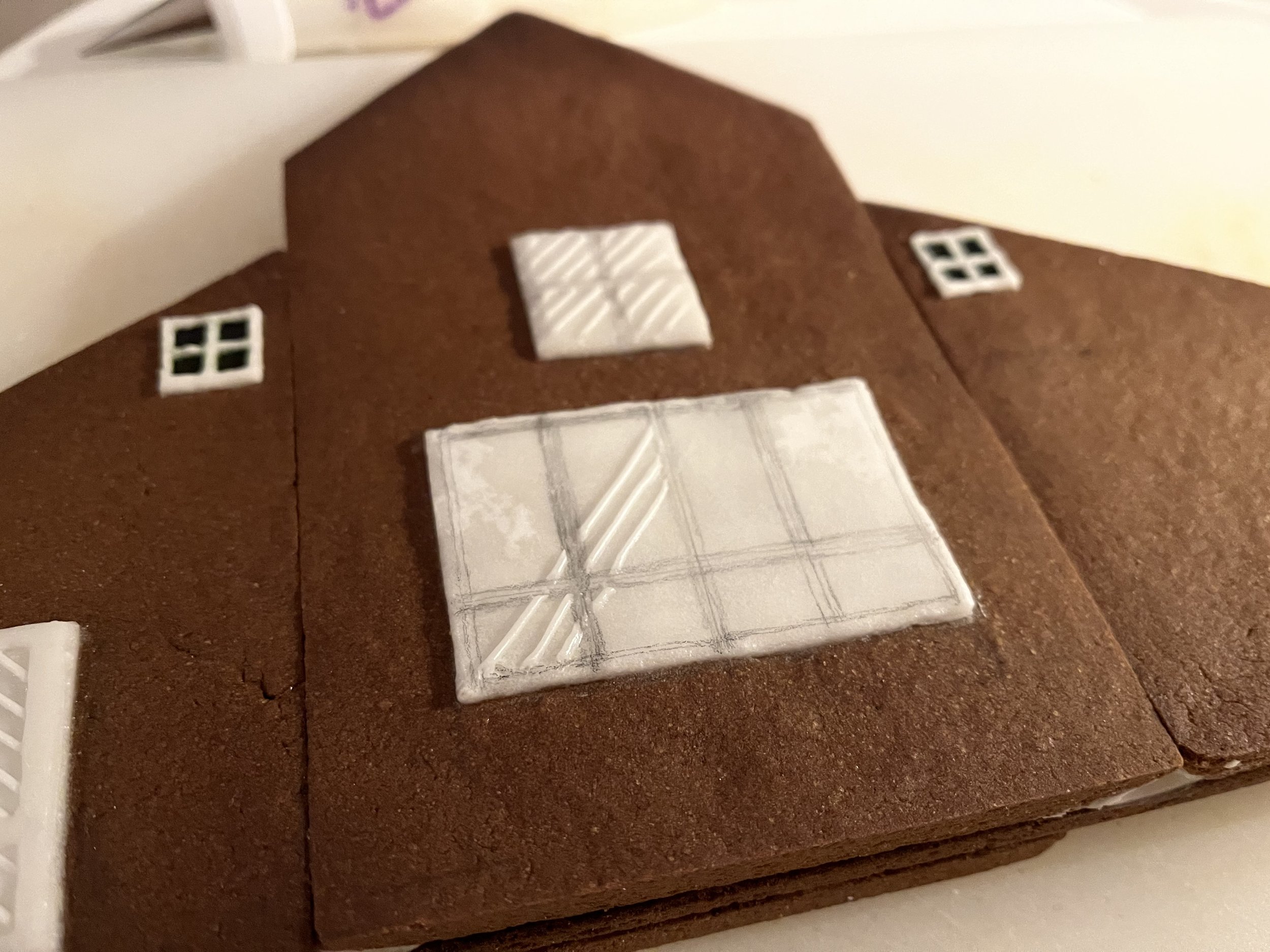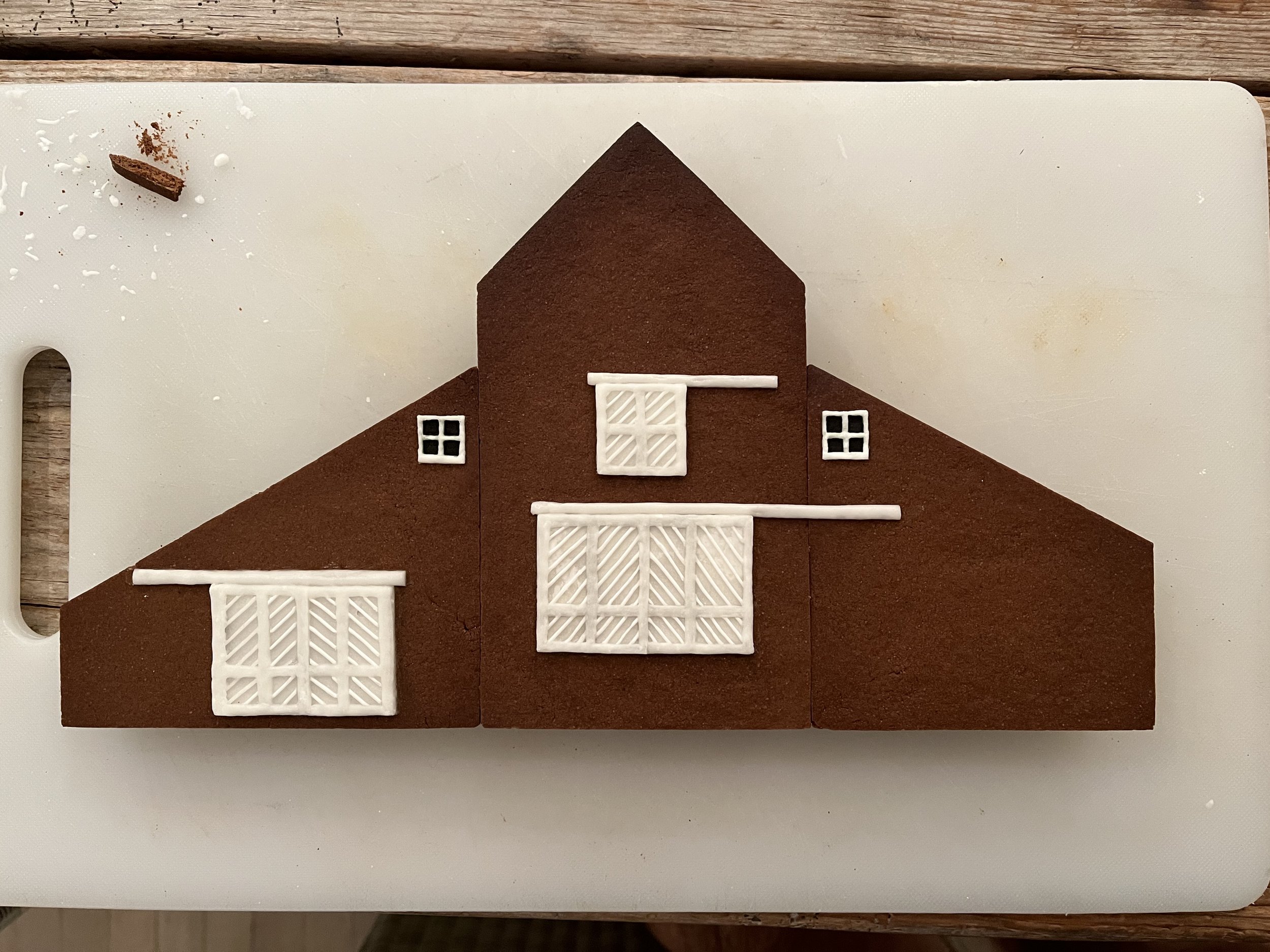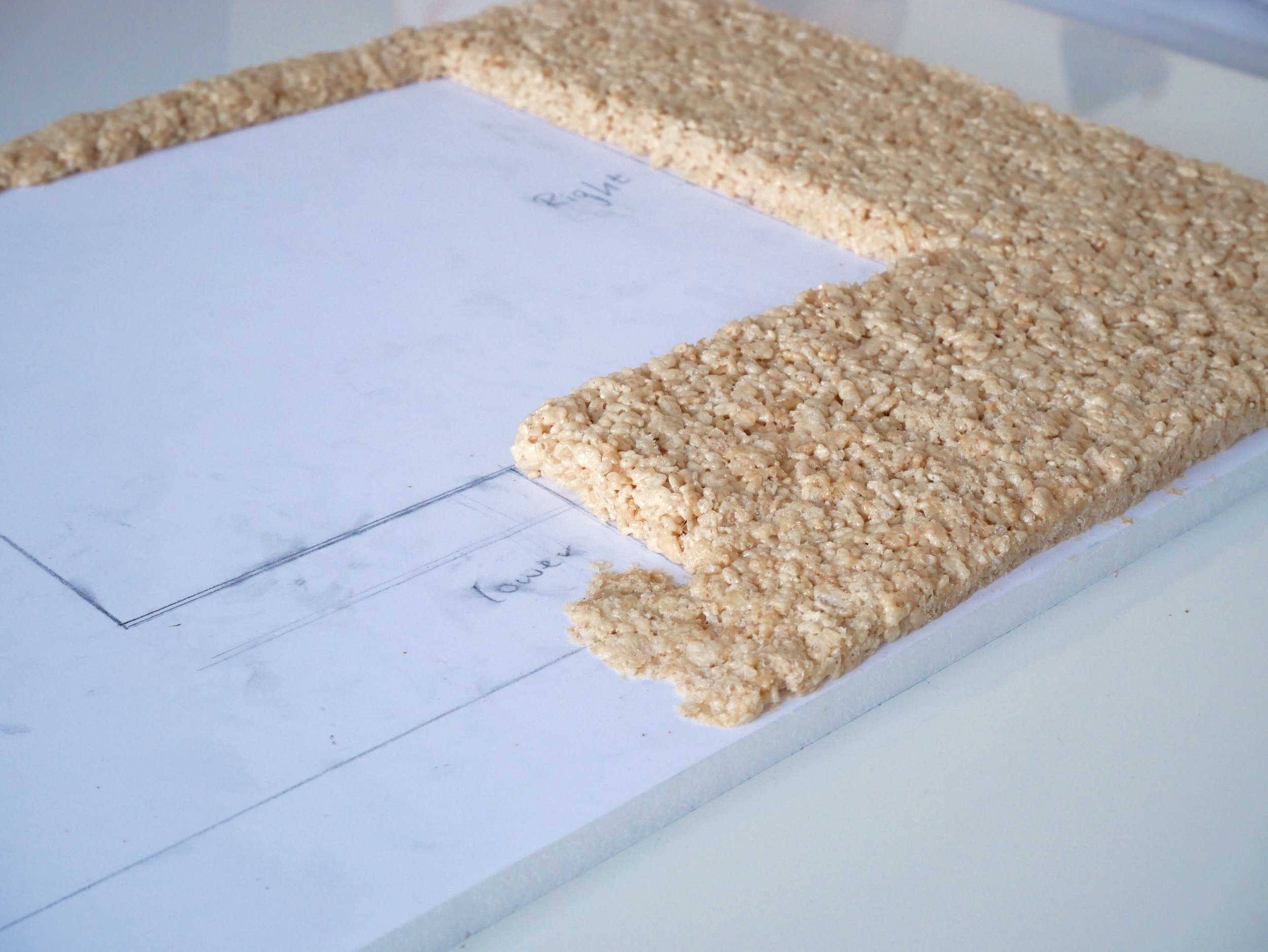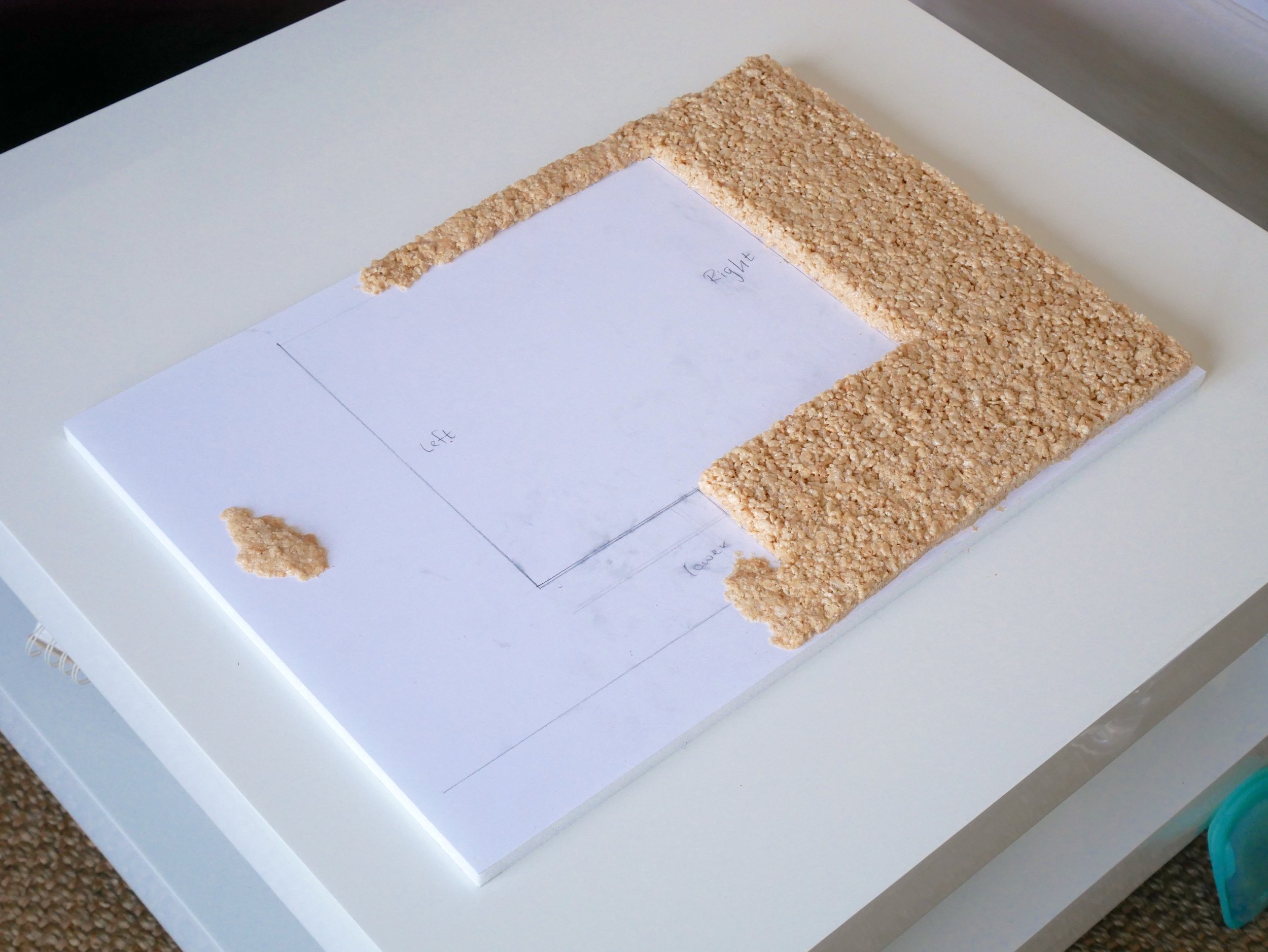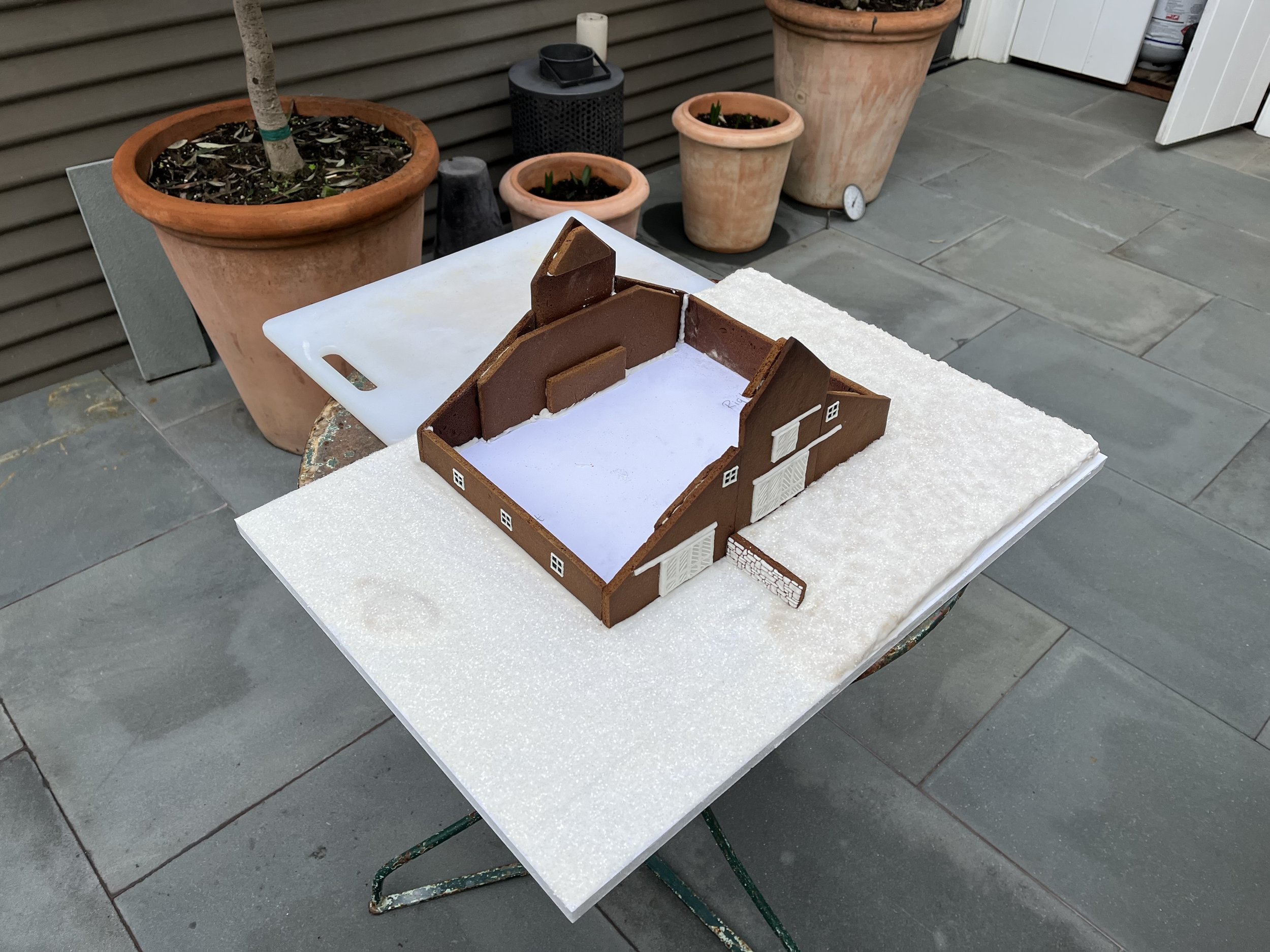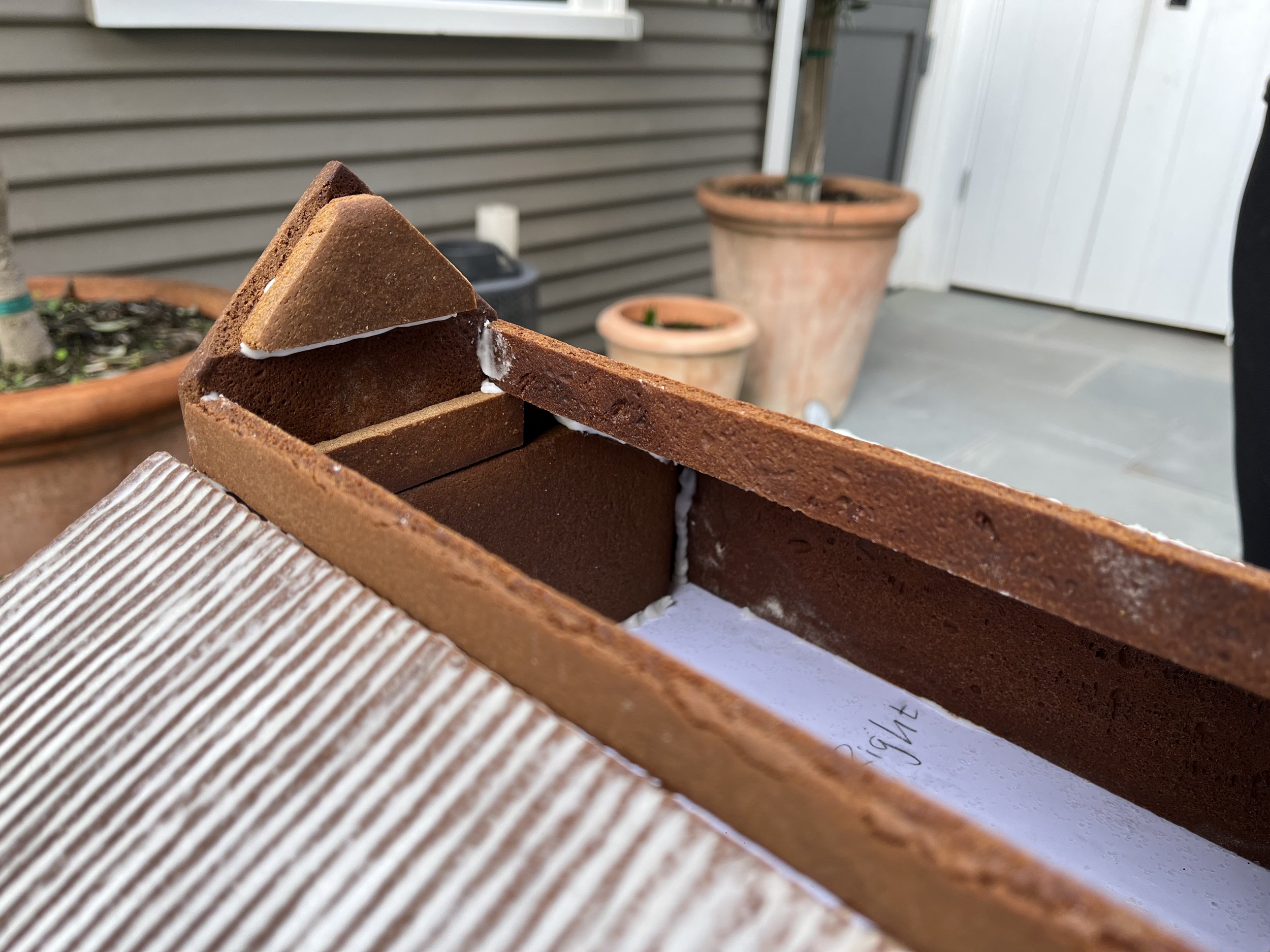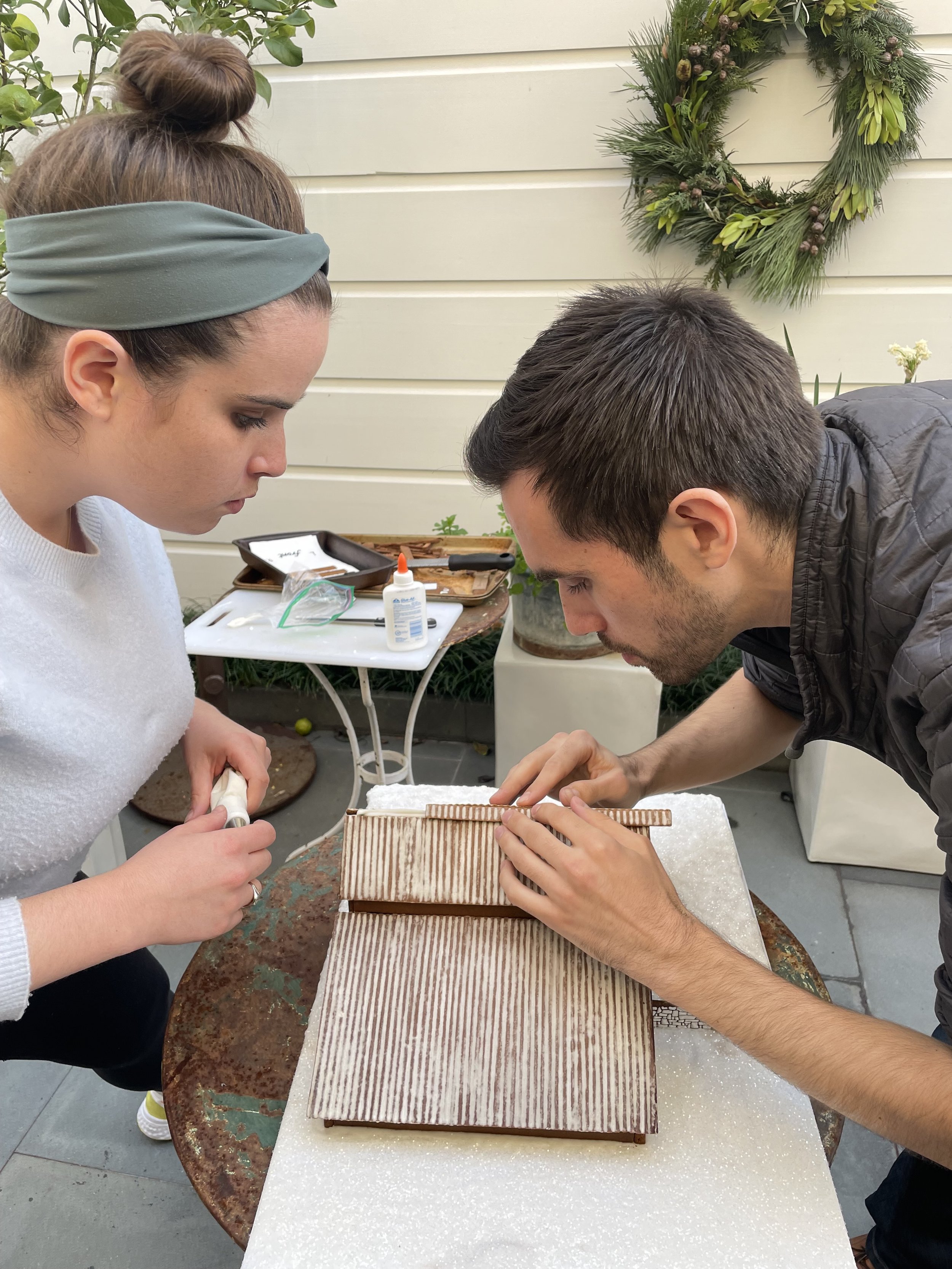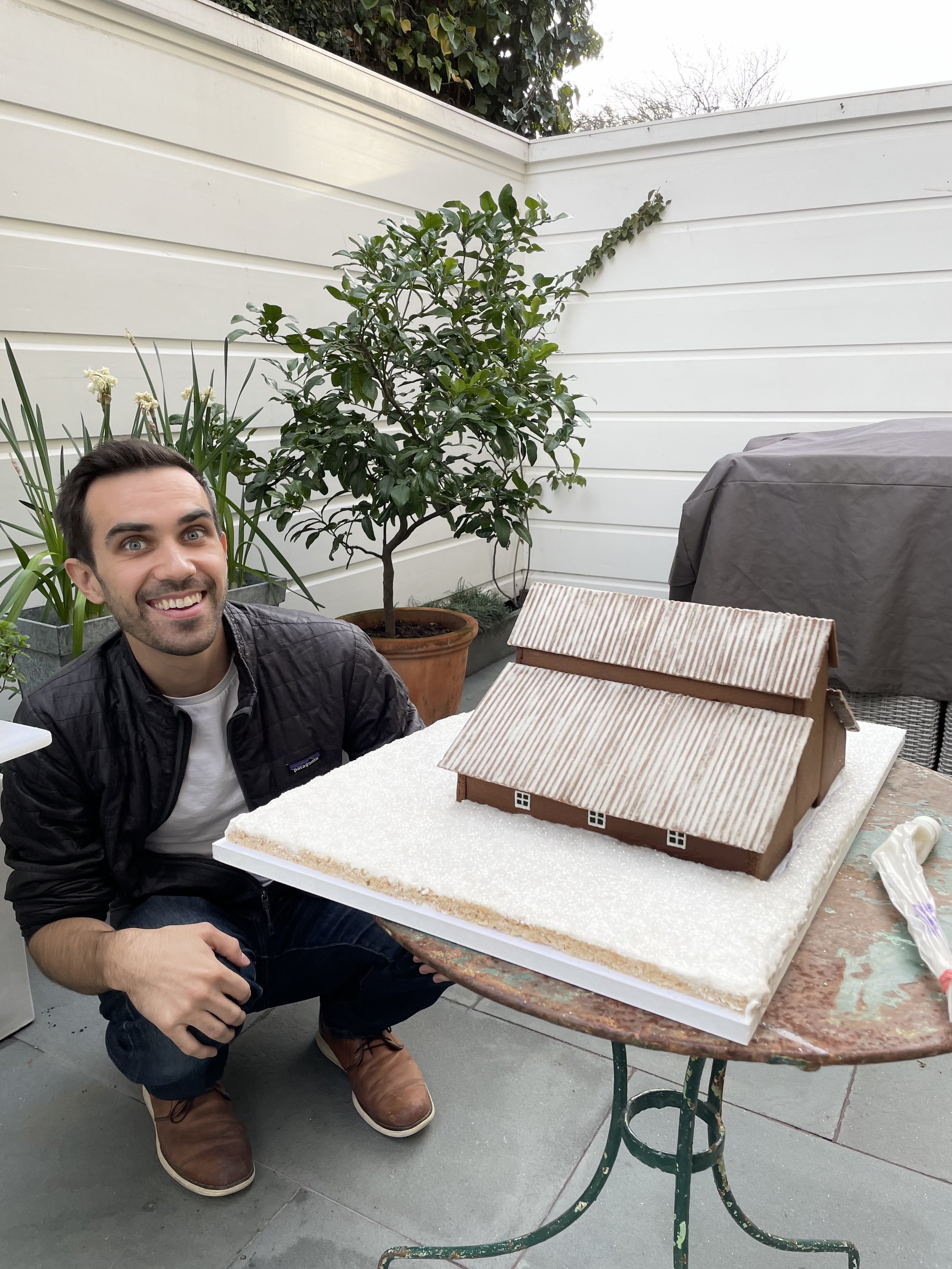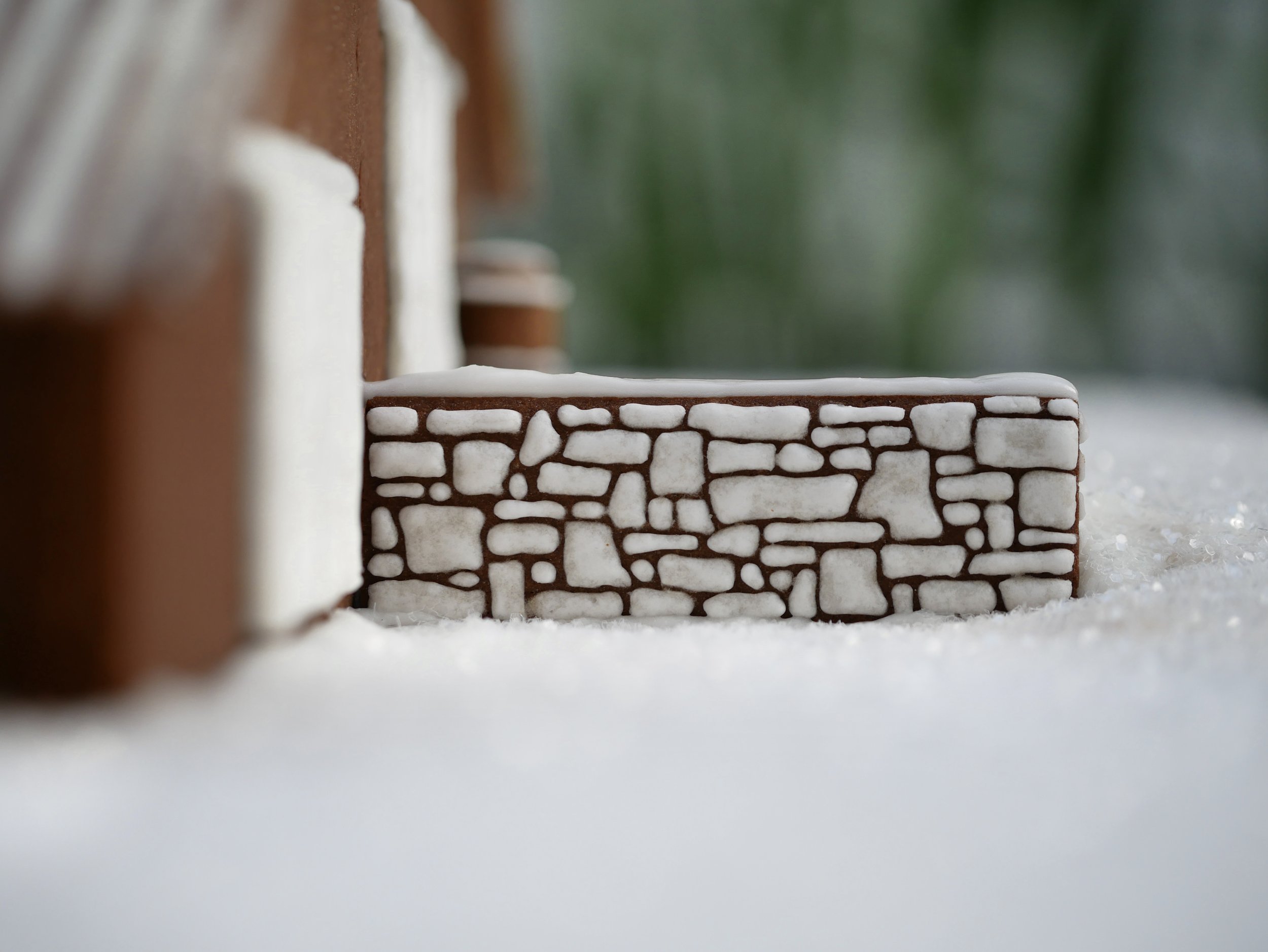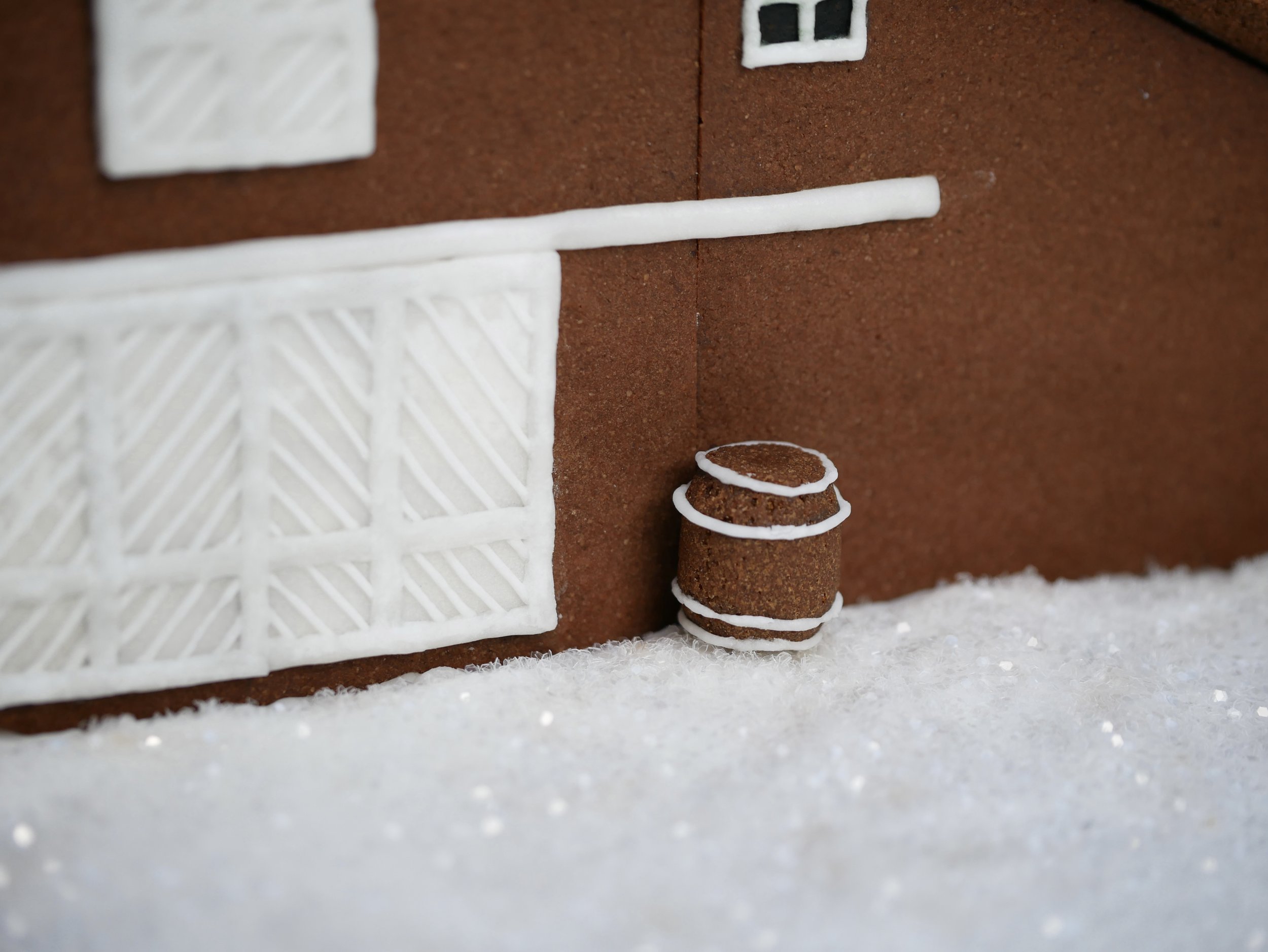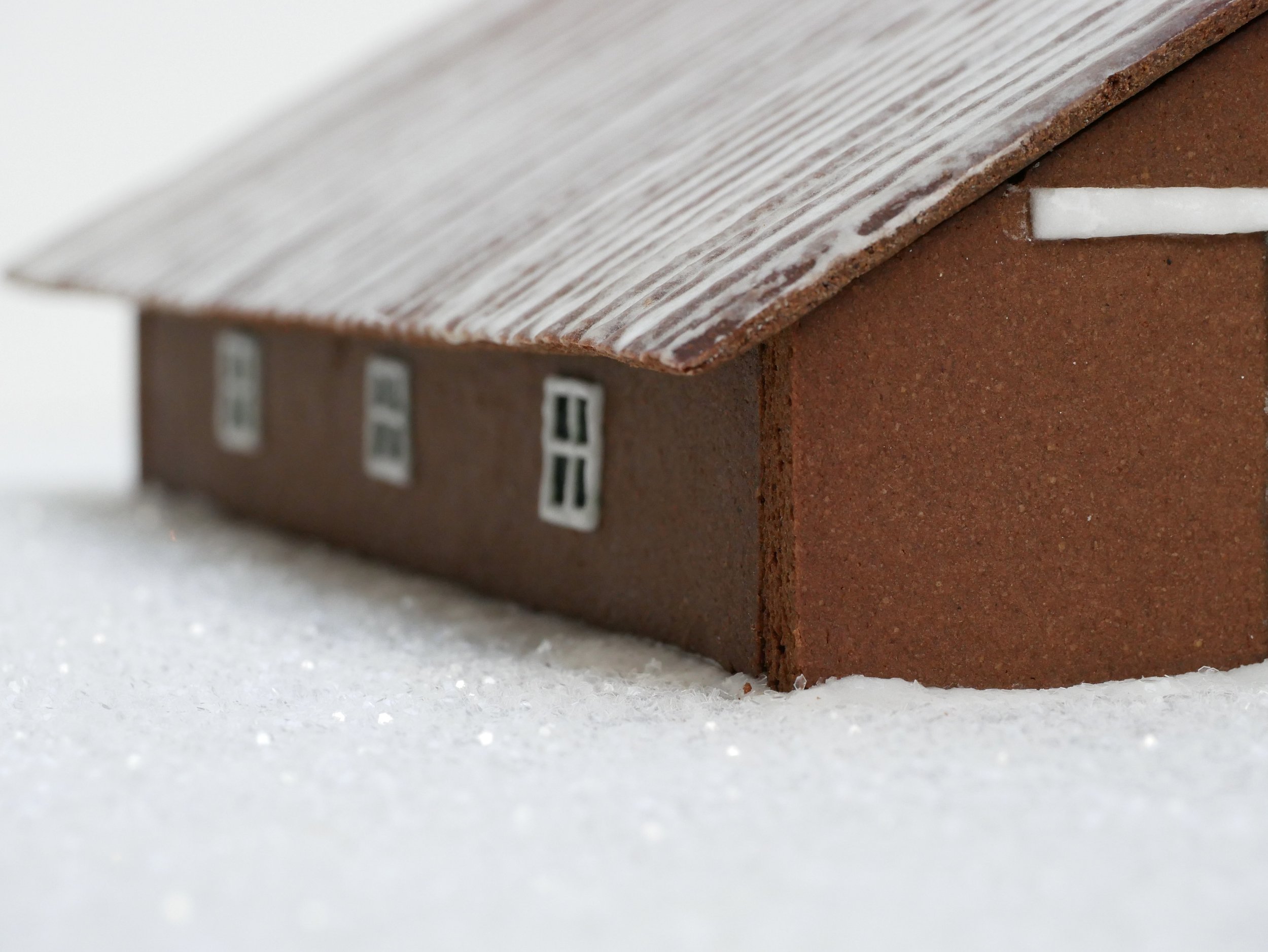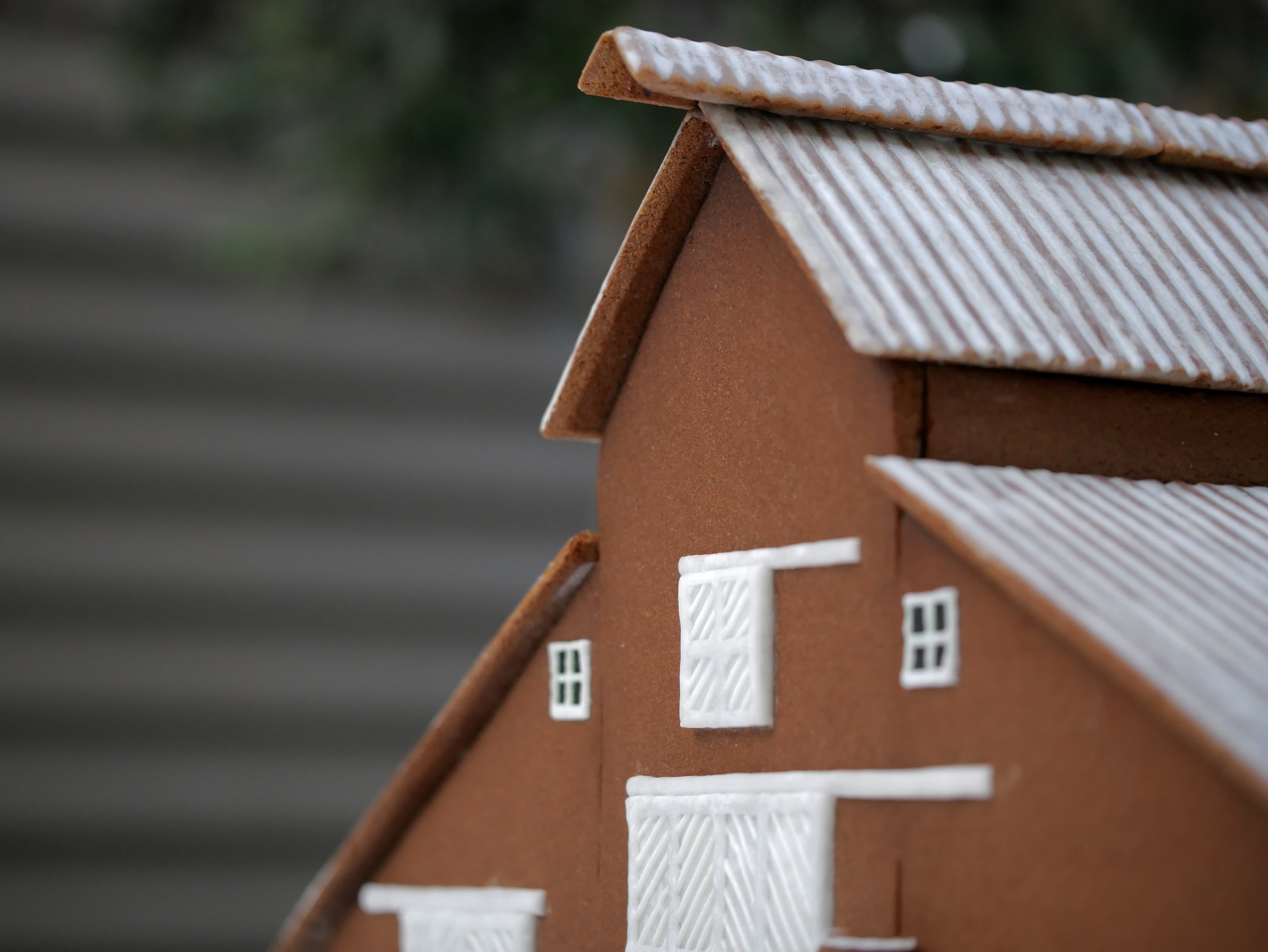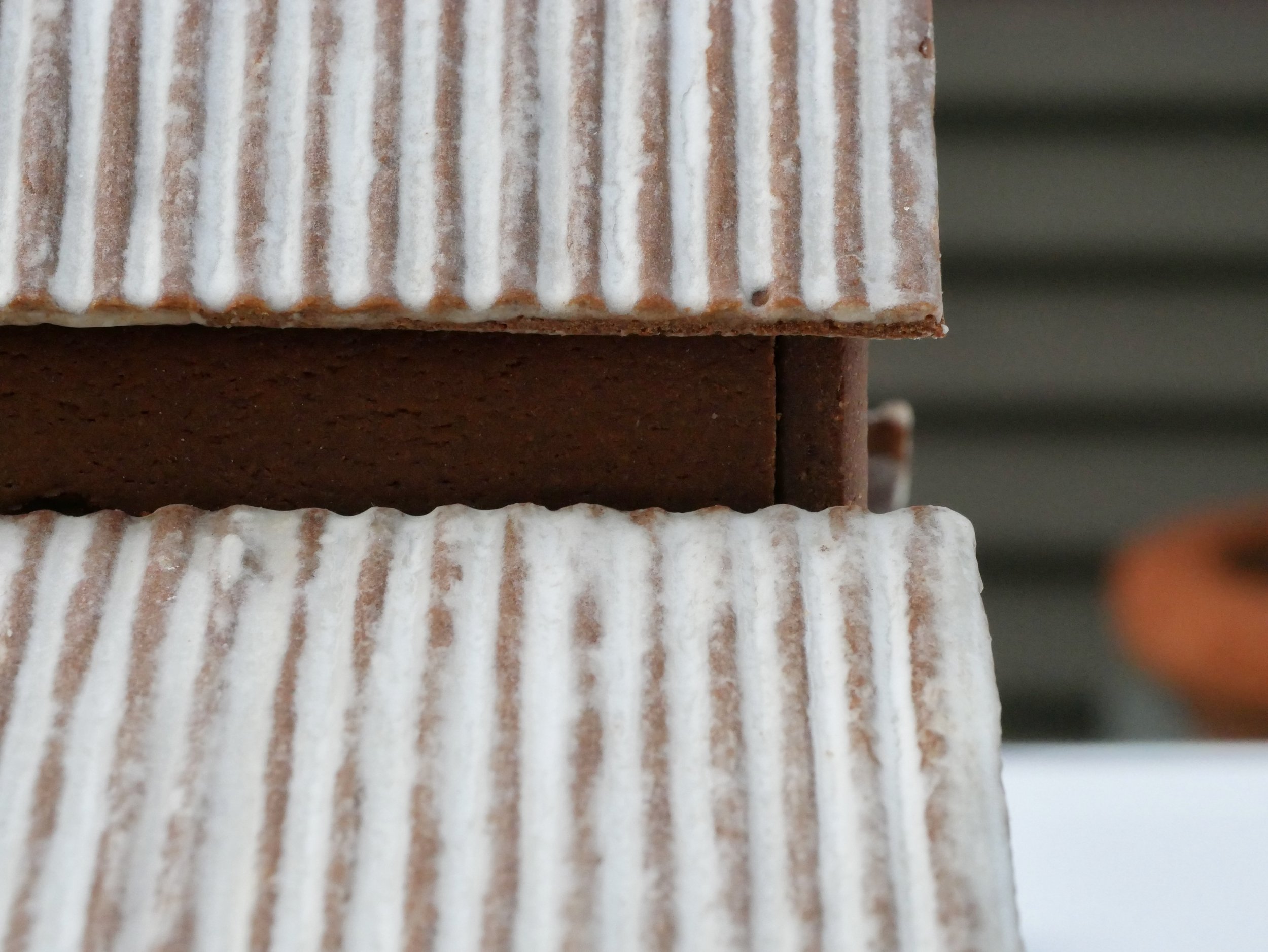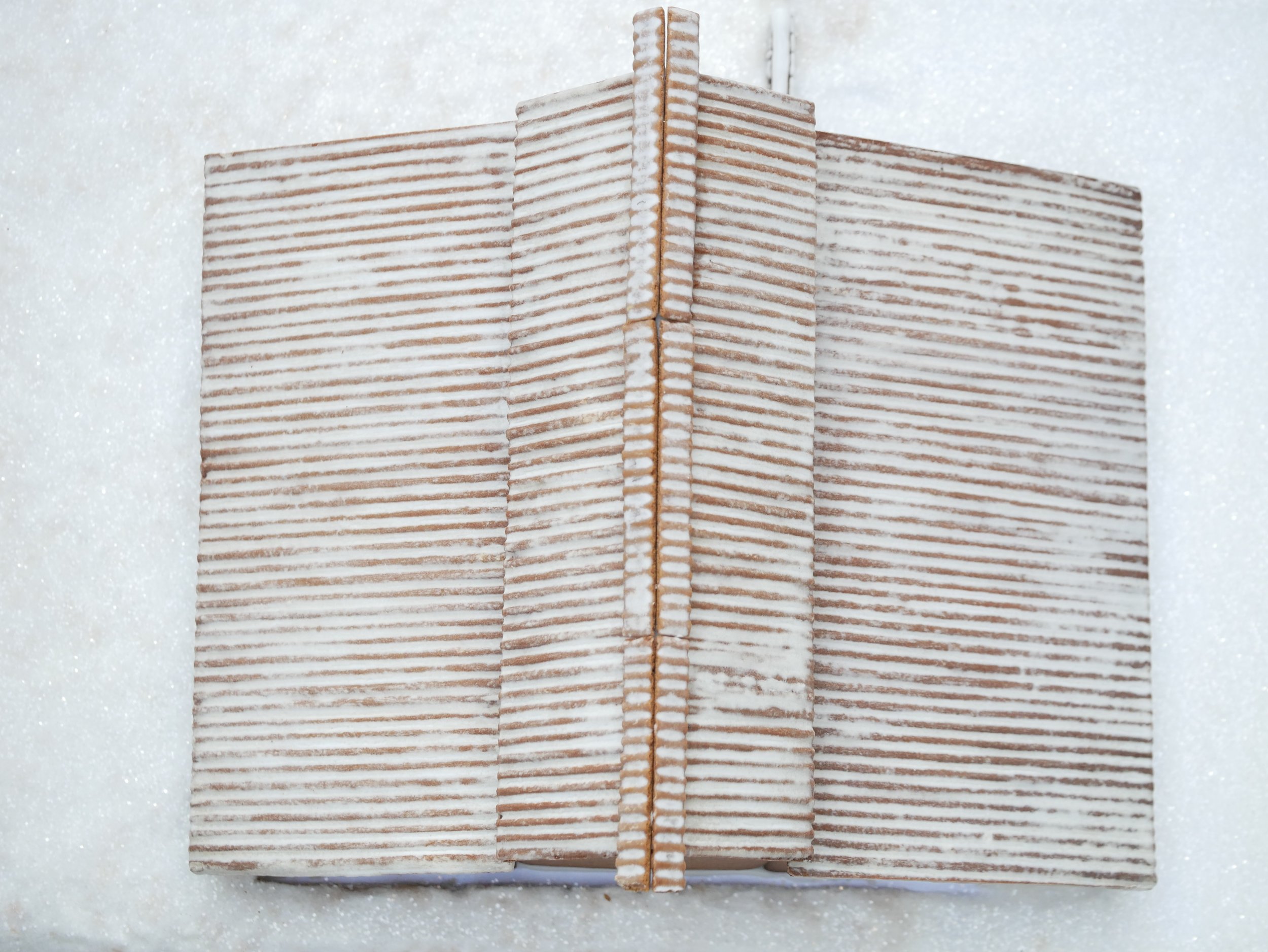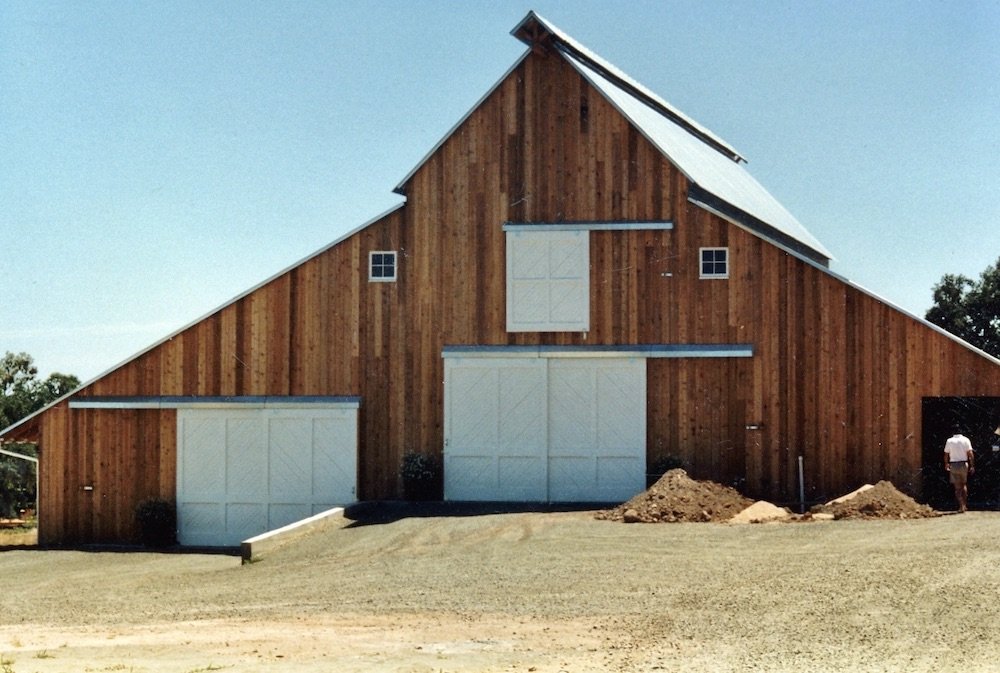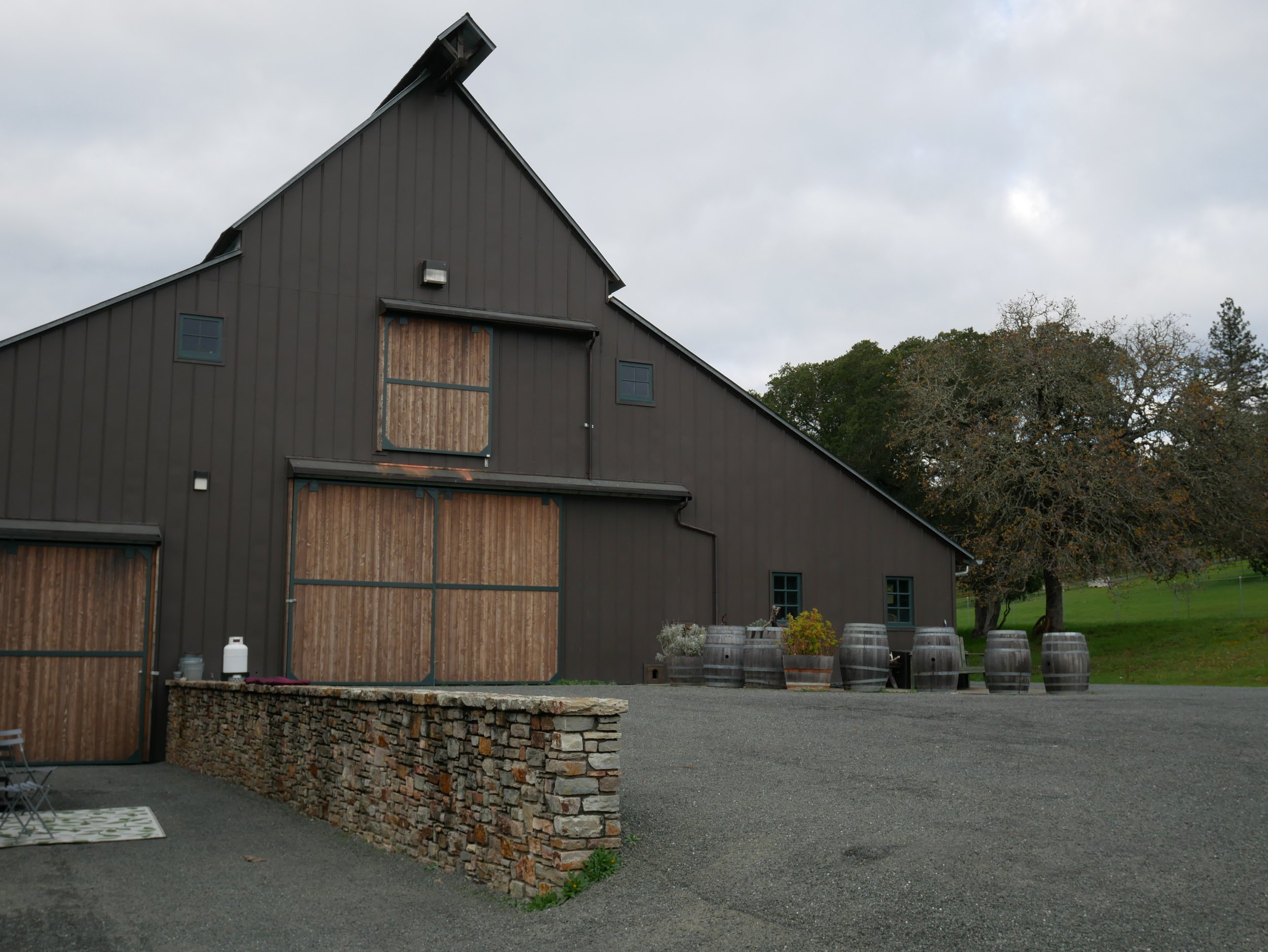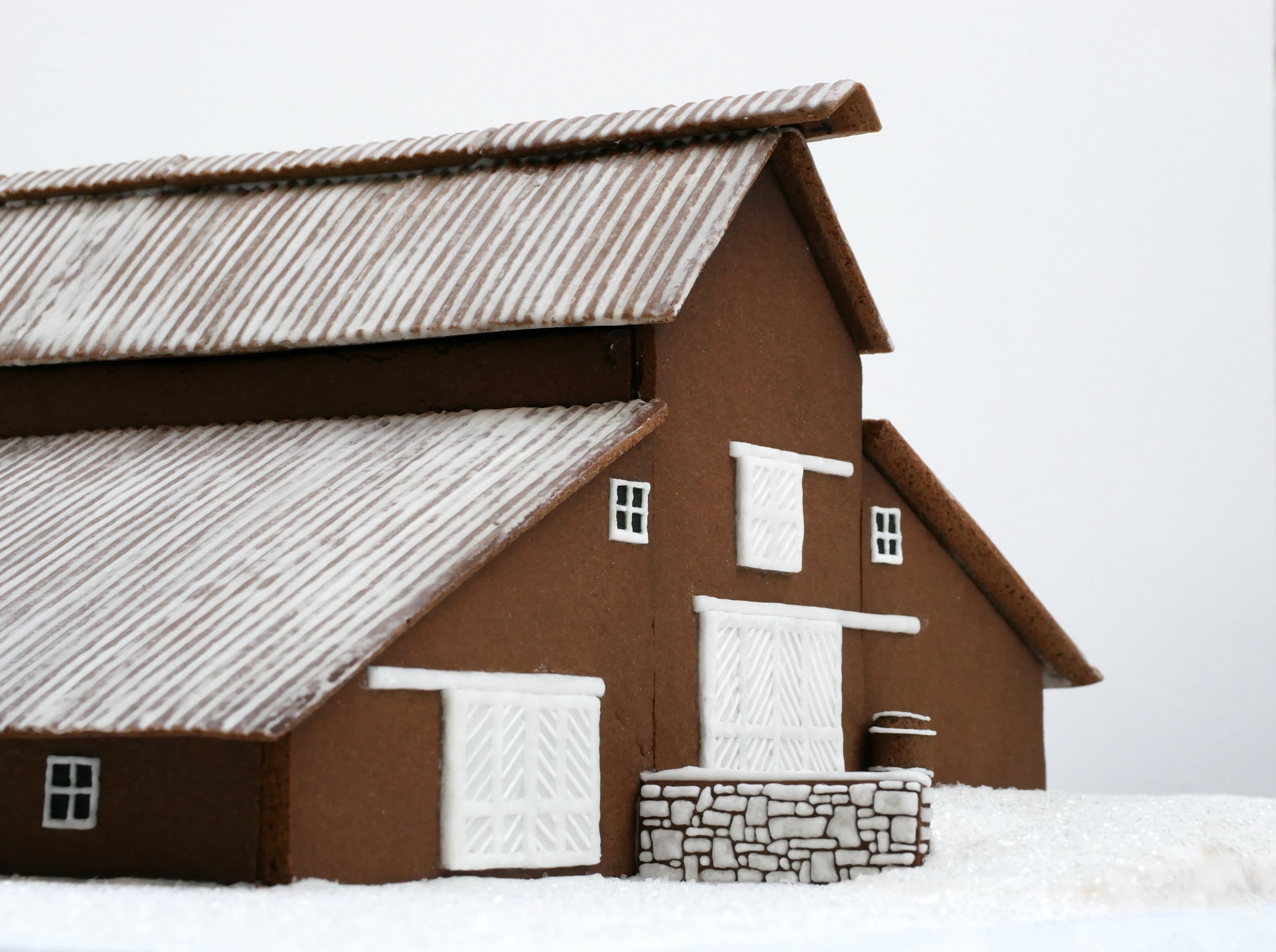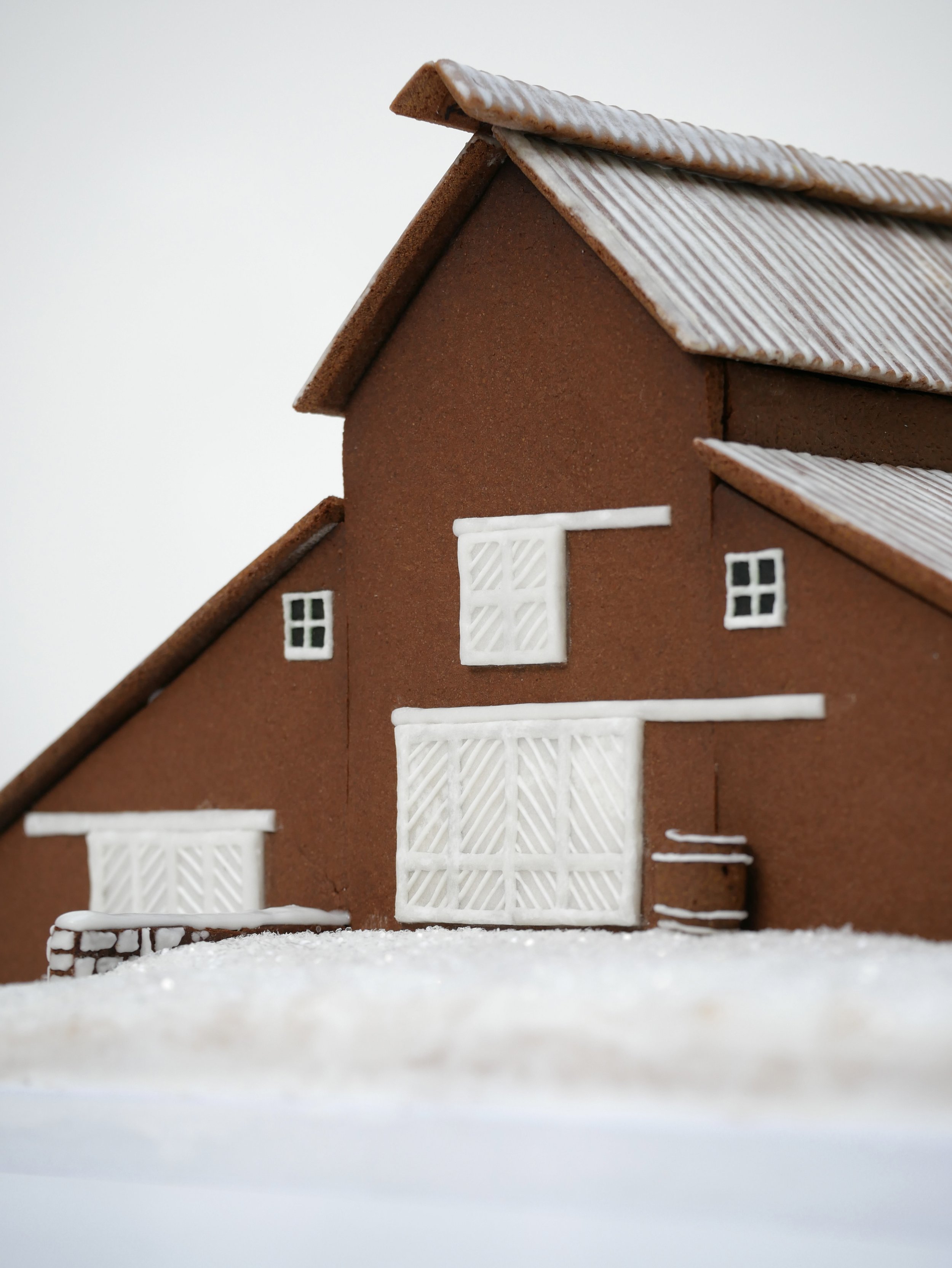Gingerbread Architecture
Personal Project
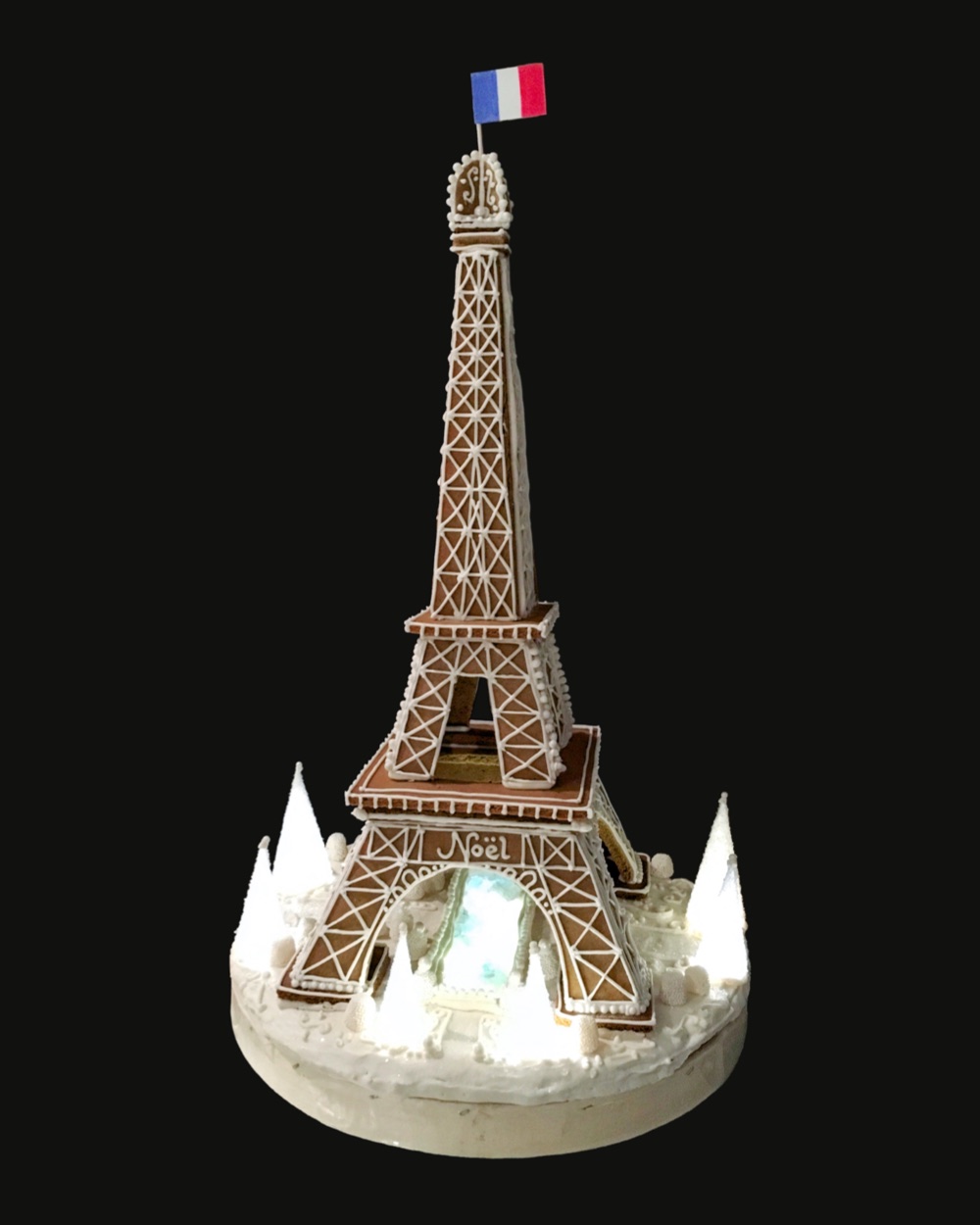
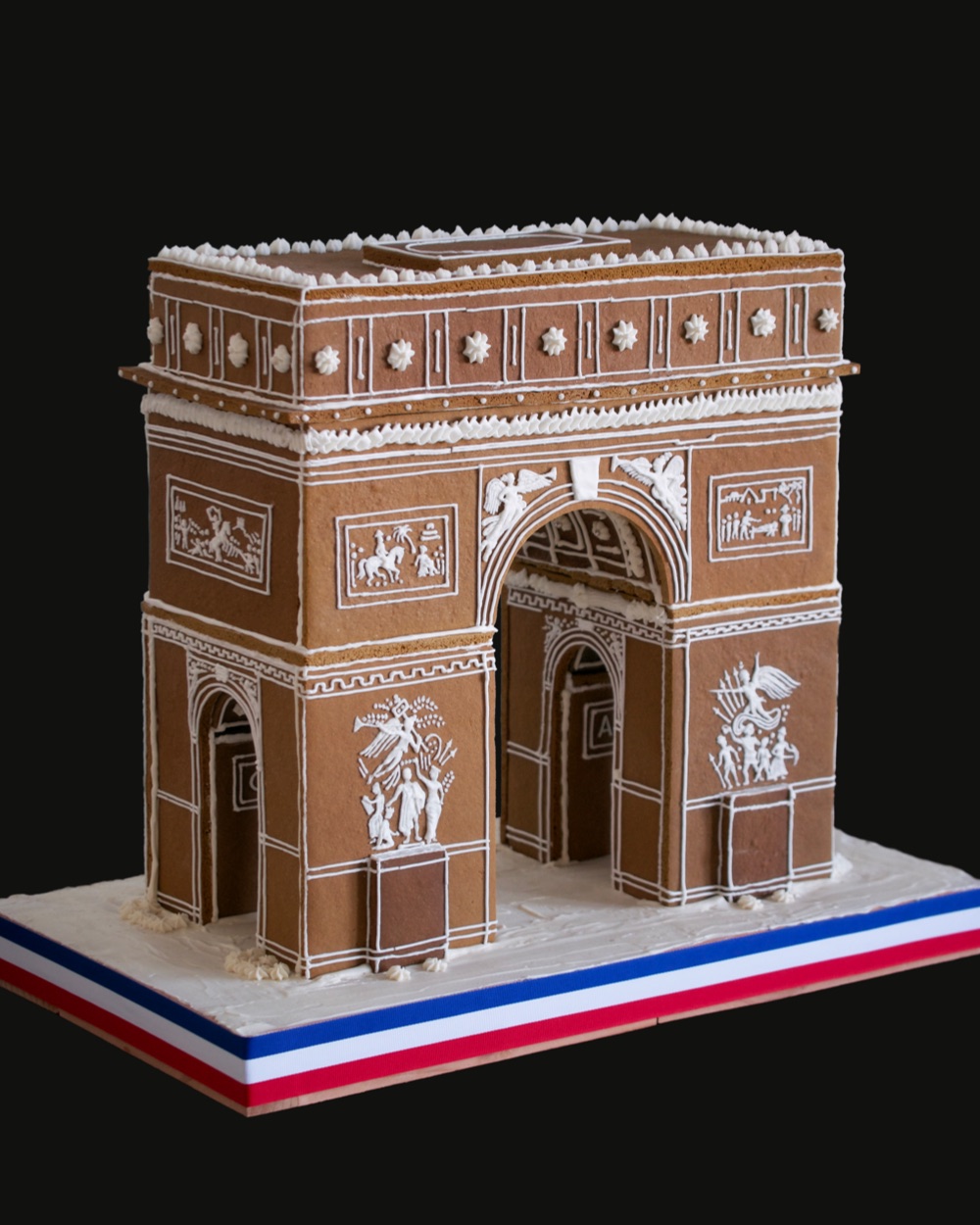
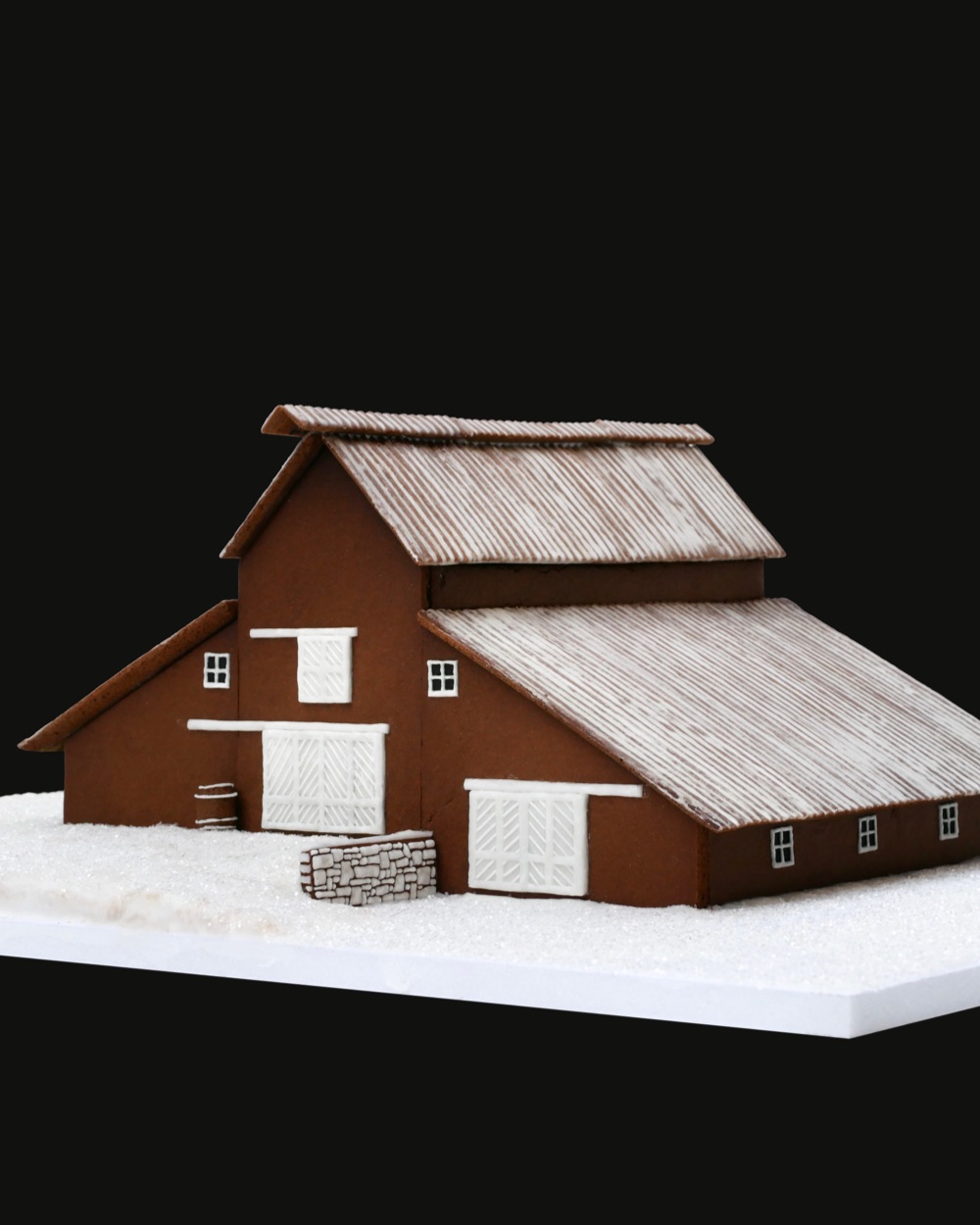
My sister Abigail and I grew up decorating gingerbread houses every year. Abigail is now a talented baker (see Hyde Street Pantry), and during Christmas 2017 we thought it might be fun to recreate the Eiffel Tower in gingerbread. It was the perfect creative project to bring us together at the holidays, and has become a multi-year tradition.
What makes these gingerbread creations worth sharing amongst my other design work is the meticulous process with which we created them.
There’s a certain type of beauty in handmade creations that ignore, subvert, and blow past our expectations—exceeding what anyone would consider a “reasonable” amount of effort. Ever since I could hold a crayon, I’ve enjoyed immersing myself in projects to such an inordinate degree. While being a professional designer requires knowing when to stop and what to say no to, I’ll always gravitate beyond “reasonable” limits.
That’s where the magic lies.
Eiffel Tower
2017
After 3 days of baking, icing, and assembly, the tower was complete. We turned on the illuminated base, took a few snapshots, and went out for dinner to celebrate.
When we returned, we found our adorable (yet mischievous) dachshund had jumped on the table and eaten half the gingerbread!
Arc de Triomphe
2018
As the following Christmas approached, we were eager to outdo ourselves. We chose the Arc de Triomphe, which we passed every morning on the walk to school while living in Paris as kids.
We had no idea it would take 3 weeks!
The Arc turned out to be dramatically more complicated in every way. The piece count required a spreadsheet and precise measurements. It was like designing a LEGO set.
The 1/10″ = 1′0 scale (where each measurement is 1/120 of the real building) turned out to be so large that some pieces required their own baking sheet. Not only was that difficult to bake, but the risk of a piece breaking was unnervingly high.
Abigail estimates she made 10 pounds of gingerbread dough!
We created curved gingerbread pieces for the ceilings of the 3 archways, slowly baking them over custom sheet-metal molds.
While Abigail churned out batch after batch, I focused on the icing. Reproducing the Arc de Triomphe’s neoclassical details turned out to be the vast majority of the work.
The righthand photo below provides a sense of scale—both how small the friezes were and how massive the entire structure was!
Many of the sculptures and friezes on the Arc depict scenes from the French Revolutionary and Napoleonic Wars.
Two photographs above by Alvesgaspar, CC BY-SA 3.0, via Wikimedia Commons
Scenes from Napoleon’s life.
After 3 weeks, we could hardly believe it was done. Voila!
The Barn at Atwood Ranch
2021
After the excessive complexity and scale of the Arc de Triomphe, we resolved to simplify. Or, at least, that was the idea!
We chose to recreate a barn that our dad designed in 1987 for the Atwood Ranch and Vineyards in Sonoma, California. We loved its practical elegance. And just like the Parisian monuments, the barn held special meaning for our family.
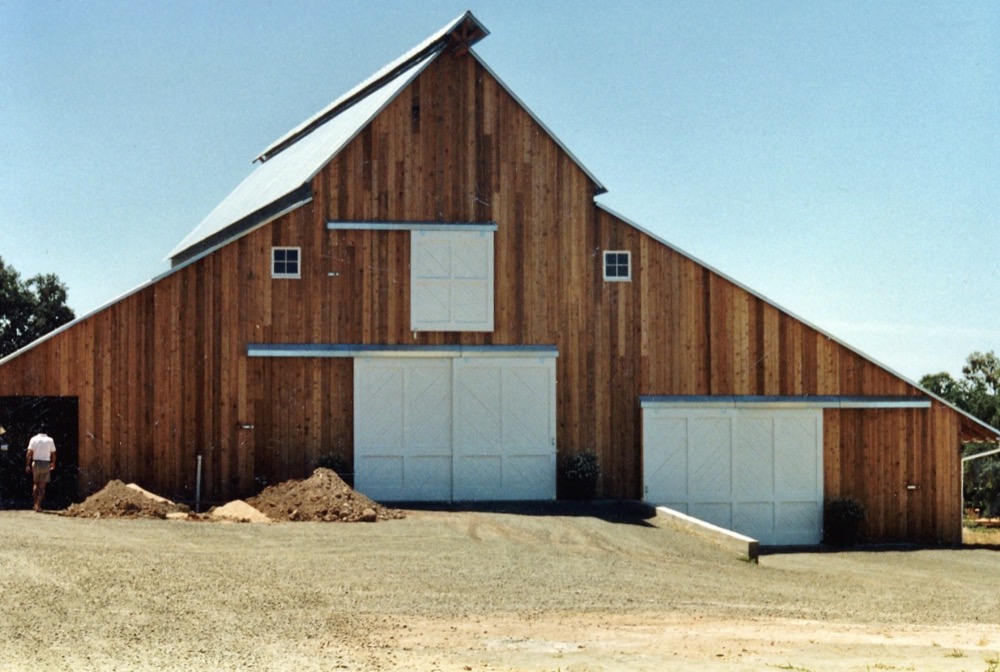
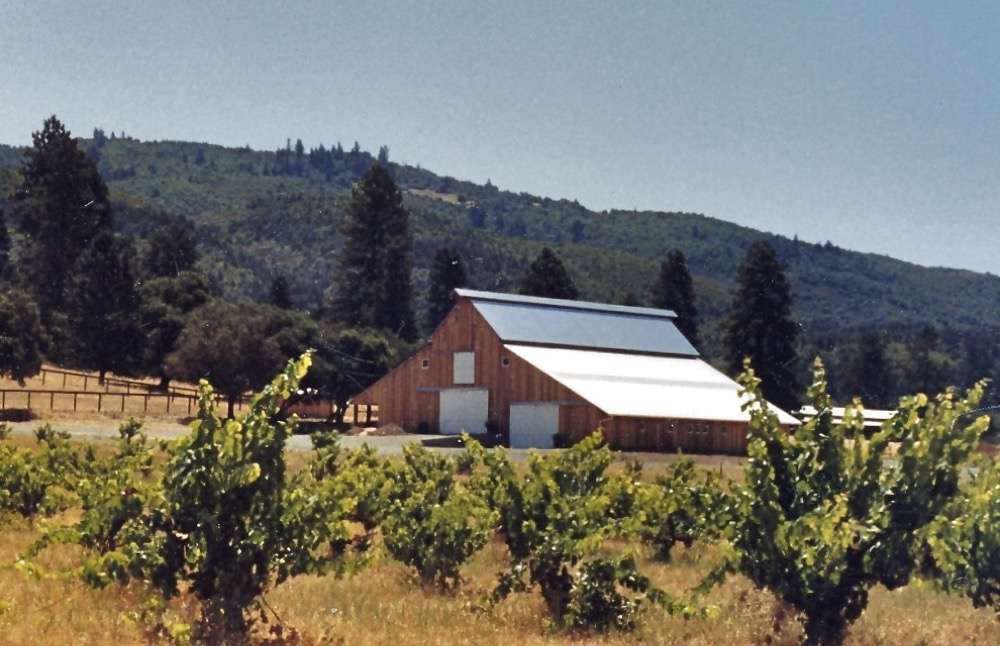
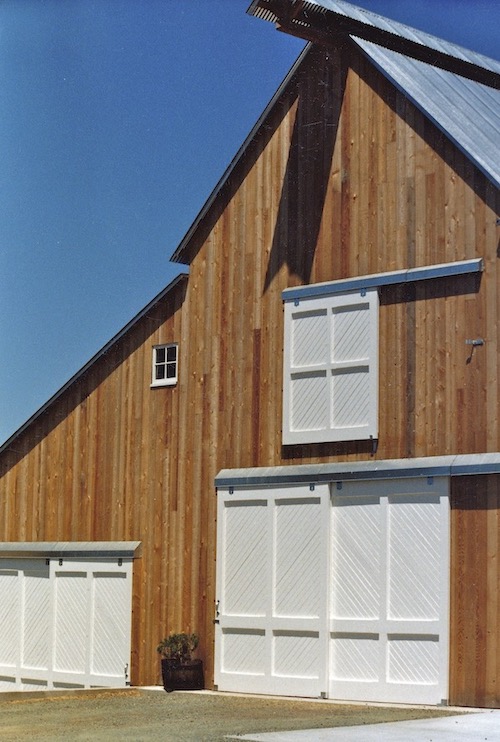
Film photos that our dad captured during construction.
Film photos that our dad captured during construction.
The barn was dramatically more precise than any of our past creations.
I cleaned and finished each piece using a box cutter and Microplane cheese grater, ensuring that everything fit together seamlessly.
The facade was too large and complex to bake in a single piece. More precise techniques, chamfered edges, and laminated support allowed it to be composed of 3 separate pieces.
For the first time, all of the building’s structural icing was hidden from view.
The barn windows and doors would not have been possible without the icing techniques I learned while working on the Arc de Triomphe.
It turns out that rice crispy treats are a perfect (and delicious!) material for terrain.
After a week of rigorous planning and making components, the final assembly was quick.
A closer look at a few details…
We recreated the corrugated metal roof by pressing bamboo skewers into warm gingerbread, then brushing the pieces with a thin icing glaze.
The roof’s chamfered edges make it seem much thinner than reality.
The present-day barn has seen minor changes. We based the gingerbread version on the original with white doors and unpainted wood siding.
There’s a certain type of beauty in handmade creations that ignore, subvert, and blow past our expectations—exceeding what anyone would consider a “reasonable” amount of effort. That’s where the magic lies.
Interested in working together on a project?
